-
Posts
985 -
Joined
-
Last visited
Content Type
Profiles
Forums
Gallery
Events
Posts posted by EricWilliamMarshall
-
-
-
I undercut the flowers slightly and the carving looked ok enough for the time spent so far. I popped the carving off and wet the paper and rubbed most of it off quickly. The rest yielded to the X-acto blade with a couple quick scapes.
I noticed a couple of my cuts didn’t cut all to the base so I scraped that as well.
I thought I would need to scrape or sand at this point, but I’m happy enough with the exercise as is. Beyond the the sawing, the cutting (and grinding) took two 15 minutes sessions (plus a bit more for photos). I assume this would quicker with practice. I think I would invest in buying or making a small gouge to supplant my ‘scraper’.
-
- bruce d, Edwardkenway, KARAVOKIRIS and 2 others
-
 5
5
-
- Chuck, Edwardkenway, mtaylor and 4 others
-
 7
7
-
-
Using a ‘regular’ flat wood chisel and a x-acto blade, I cut in “low” areas. The contrast between high and low helps define the definition of the different areas.
I’ve used a combination of vertical and then horizontal cuts to knock chunks of wood, with slicing cuts for vertical cuts for the curves.
-
-
I first started to saw the wood without support and that made me nervous. I found piece of pine scrap with a pre-existing hole a cut a v-shape and then clamped the pine to my work area. That worked better but sometimes I found myself sawing into the pine as well as my target. A few pencil marks helped that issue.
For the sawing, staying vertical can be a challenge and tight turns require cutting a extra bit out with the saw so the back of the saw blade doesn’t bind when turning. The whole cutout took 15 minutes; which was quicker than I expected. That’s nice because anything printed and glued can be cut! I used a jeweer’s saw since I don’t have ‘proper’ cooping saw and the smallest blade I could find - again for jewelry making.
-
Since Chuck kindly posted the scale pdf of the decorations, I felt laziness and a bit of fear were the only bars to an attempt.
After printing, I glued the paper to my sacrificial bits of wood. I aligned the longest direction of the pattern with the direction of the grain in a hope to reduce the wood splitting apart.
- bruce d, mtaylor, GrandpaPhil and 2 others
-
 5
5
-
I rushed along with CA glue and trusty X-acto knife without too many problems. The instructions are very clear and straightforward. I didn’t find any interesting detail online, so at this point, I think I’ll be building the kit ‘as is’. Which I’m sure will be interesting and challenging enough. Apologies for the ‘missing’ photos; I was phone-less for a bit.
- VTHokiEE, GrandpaPhil, catopower and 5 others
-
 8
8
-
-
11 hours ago, ccoyle said:Quote
described as ‘near fool proof’
Don't prove me wrong here!
Hahaha! I’ll see what I can do - but no promises!
Searching for sharpies does, indeed, present less of the Midwest products and more actual boats.
Thanks VTHokiEE for the rope suggestions! I hadn’t thought how ‘fancy’ the sails may be at this point it depends on what I can pull off.

- thibaultron, Duanelaker and VTHokiEE
-
 3
3
-
Thanks VTHokiEE for the advice! (I hope my build will look as nice as yours does!) Silly question: what size rope(s) would you suggest ordering for this kit?
- VTHokiEE and thibaultron
-
 2
2
-
The last build was plastic, so this build will tempt the fates by being wood. Following ccoyle’s advice, this isn’t a 1/2 scale model of HMS Victory towing the Vasa, but a small kit described as ‘near fool proof’. I won’t discuss how close to fool I may be, but, as they say, the proof is in the doing.
There is a brief section in Chappelle’s American Small Sailing Craft (yes, gentle readers, I’ve bought some books recently!) but I haven’t found much else. A casual perusal of internet searches finds mostly images of Midwest’s kit!

If others have information about flatties, please jump in. Same for sage advice, sarcastic insights and flashing of the ‘please flasten your seltbelt’ sign. All are welcome.
Here are some photo’s of Midwest’s Chesapeake Bay Flattie Kit’s bits and pieces.
- thibaultron, ccoyle, Duanelaker and 3 others
-
 6
6
-
-
There is also book that has plans and covers the building of the Lexington, Five Historic Ship Models from Plan to Model by Parker. The price on Amazon ranges from under ten to fifty or so. https://www.amazon.com/Five-Historic-Ships-Plan-Model/dp/0870332589/ref=sr_1_1?keywords=Five+Historic+Ship+Models+from+Plan+to+Model&qid=1575640294&sr=8-1
While you can't buy the plans at this last link, you can peek at them: https://www.worthpoint.com/worthopedia/vintage-model-ship-plans-brig-406188495
Good luck (and welcome!)
-
Take two: Regarding accessories: https://www.scalewarship.com/store/index.php?route=product/search&search=Victory with a few photos found here: https://www.britmodeller.com/forums/index.php?/topic/234938128-airfix-180th-scale-hms-victory-sets-from-scalewarship/
What does the Hackney book cover?
-
rkwz, I have to say folks here have been every so kind and sharing (I asked couple of questions about knots and stripe painting, as well). I am shocked and astonished by the quick and thoughtful responses. I’m glad to know there such people out there, who love this craft enough to share with folks like us.
It bodes well well for the hobby and for the hard won skills found at this site. I think there is a nice side-effect; this sharing of techniques and approaches raises the skills of the entire community; part by the awareness and sharing of the various approaches and part by the reflection and communication needed to actively engage.
Good stuff (plus all the eye candy!)
-
My thanks to the moderator(s) - I literally just finished tracking down how to rename a finished build log, and it was already done for me!!
-
- ccoyle, Blue Pilot and GrandpaPhil
-
 3
3
-
18 hours ago, rkwz said:
i'm tackling is much smaller in siz
Doh, my apologies! To your question of the masts: I just finished the Revell’s USS Constitution in 1/196 scale, somewhat similar size in the real world but, I assume, a simpler kit (heavy frigate vs. ship of the line). I used the plastic masts without issue. I will note that the masts and spars can flex, which means taut lines can become slack, which is a pain.
-
Thanks for the kind words! Given my readings in the forums, I’m going try a Midwest kit. Something simple and easy to complete, that will work as my introduction to wood. I’m open to suggestions.

-
Regarding accessories: Just to gush at the photos, if nothing else, take a peek at http://www.dafinismus.de/index_en.html . I believe that fellow is a member of this forum as well.
-
Very cool snazzy technology! A bit like ships we model...
I finished the model - that is to say, there this more to improve but I have made it to the end of the instructions and I’m ok moving on to the next project. Many thanks for everyone’s time, insights and sharing. (I’m now poking about looking at drafting sites as well). Included are a couple of photos (although I cleverly damaged it while setting up the photo). The line work does not distract from the whole effect.


.thumb.jpeg.fc5d633a7b34428fcf19419a73d56d55.jpeg)
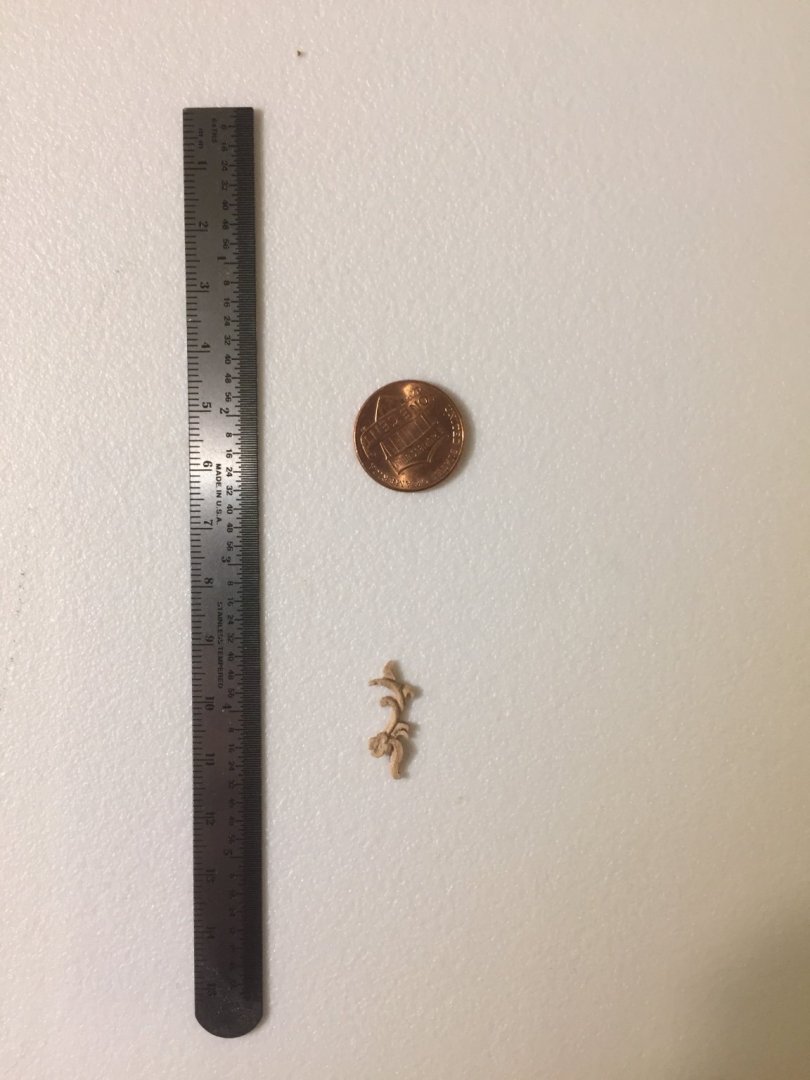
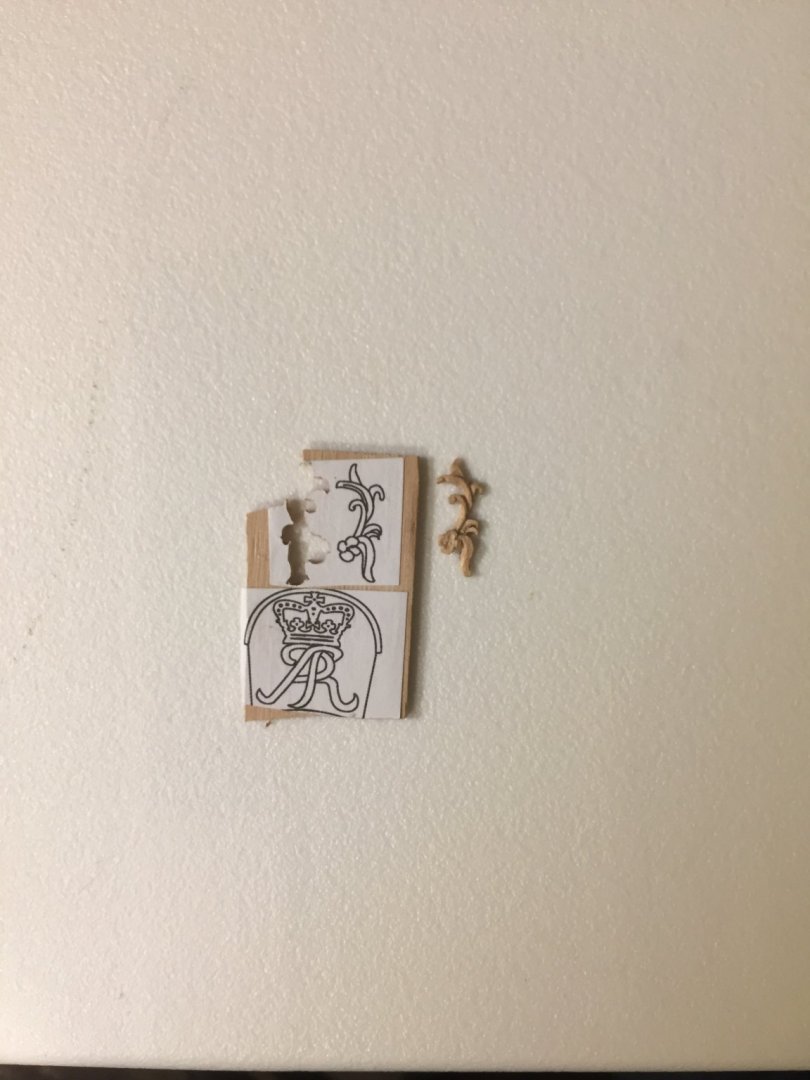
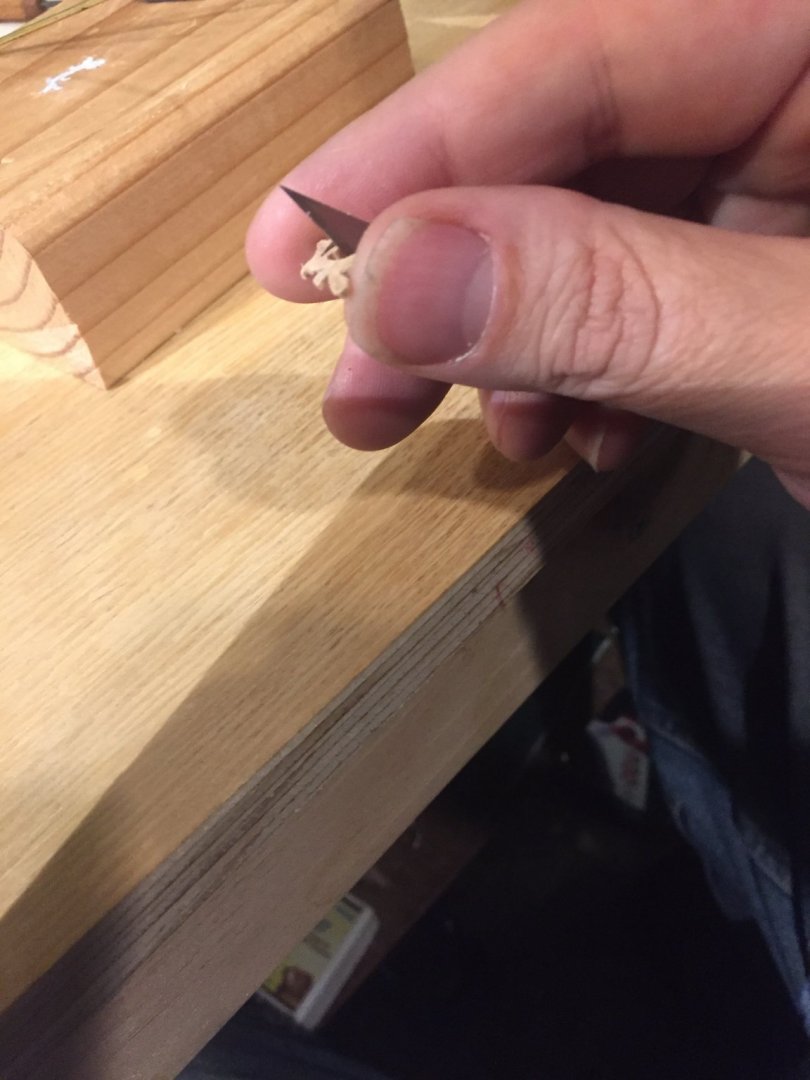
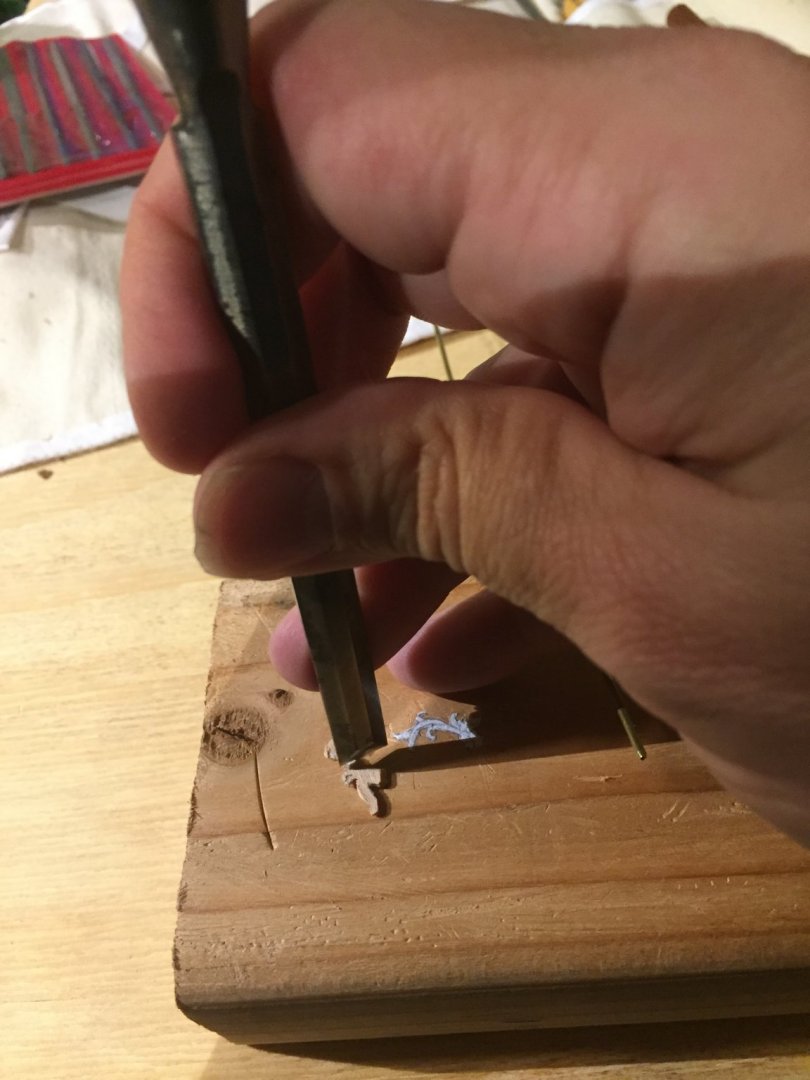
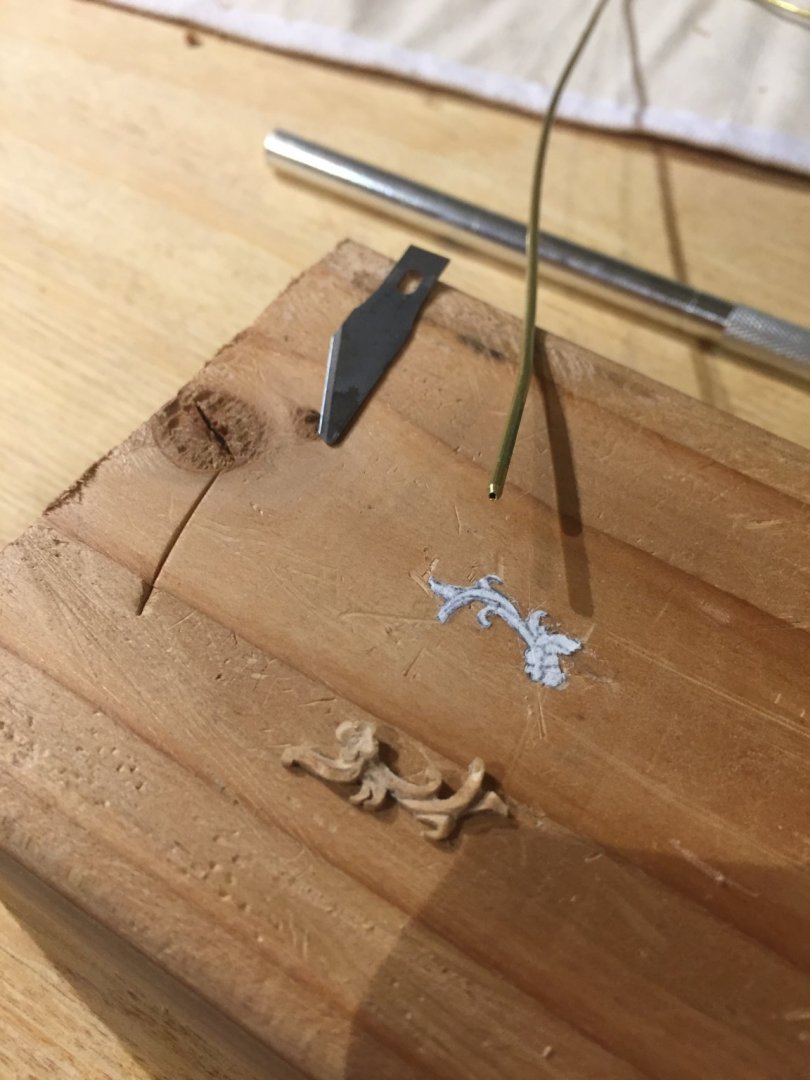
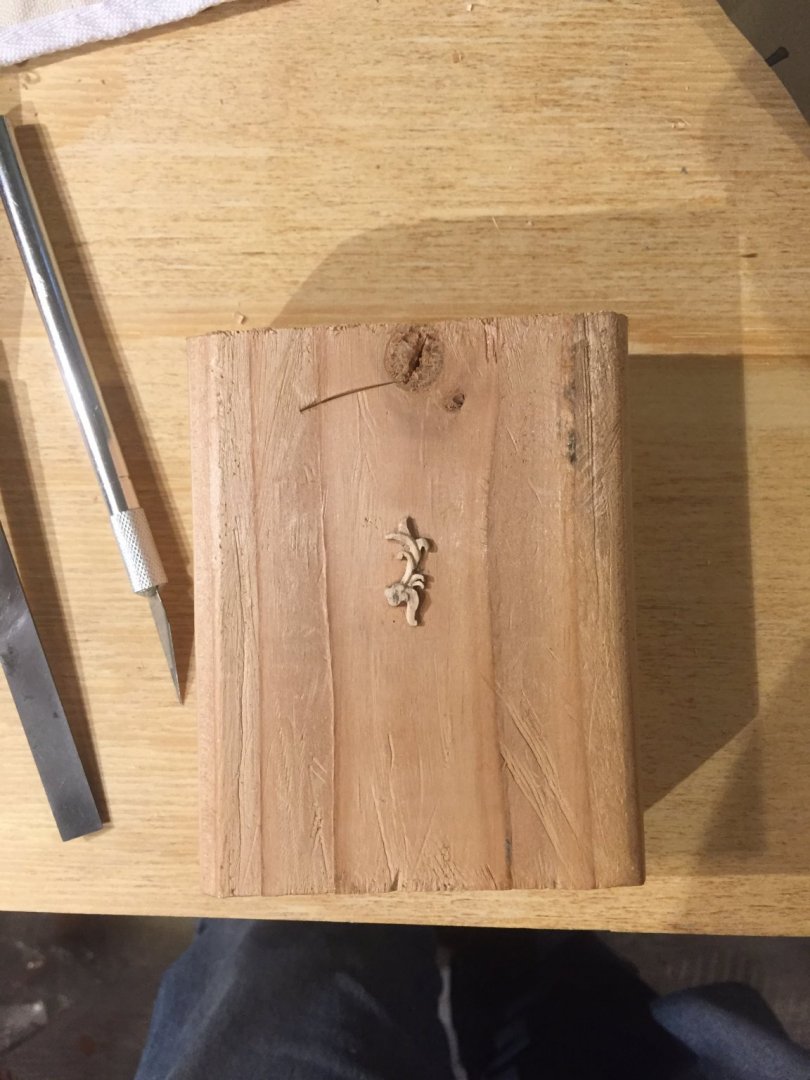
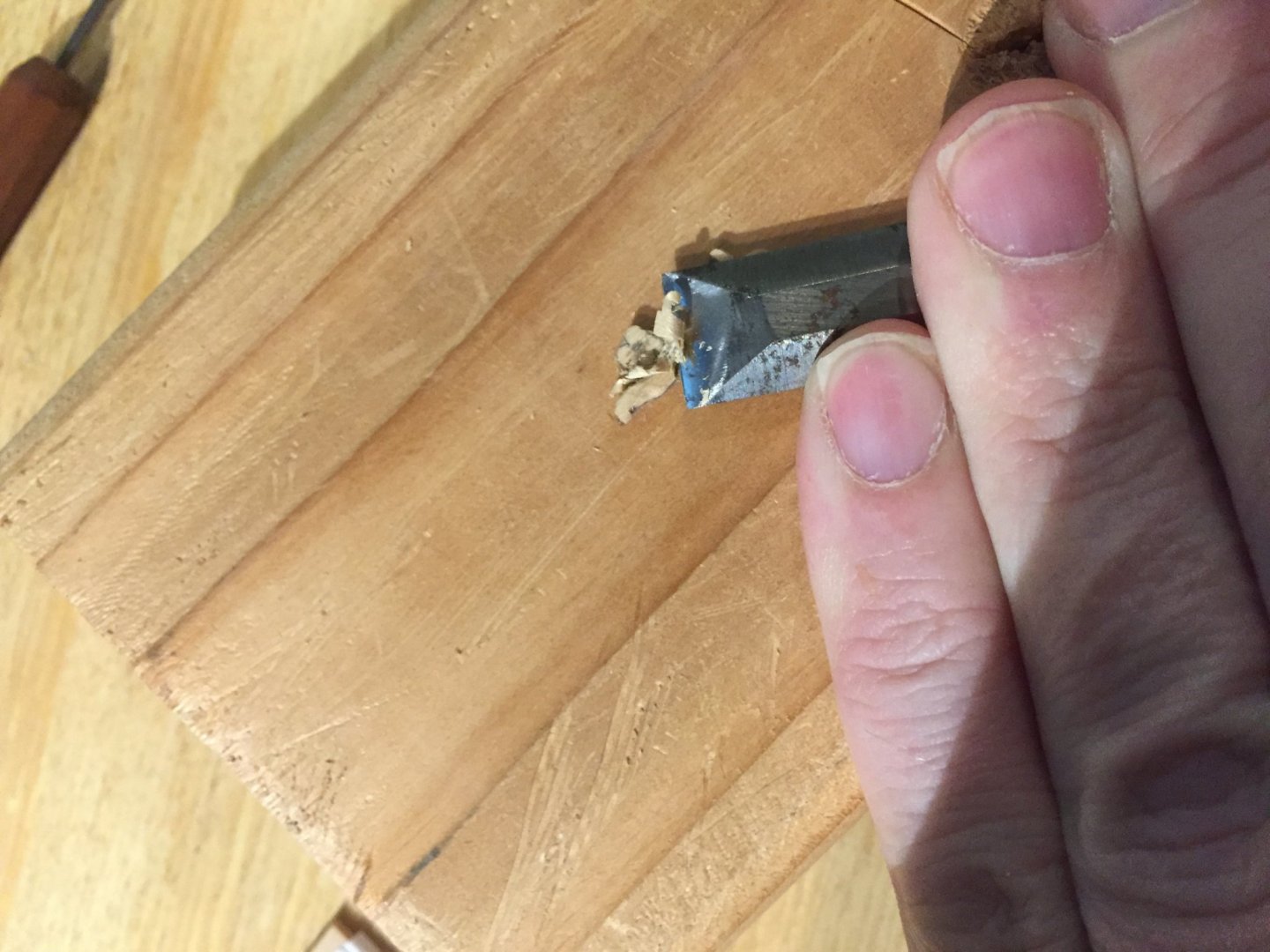
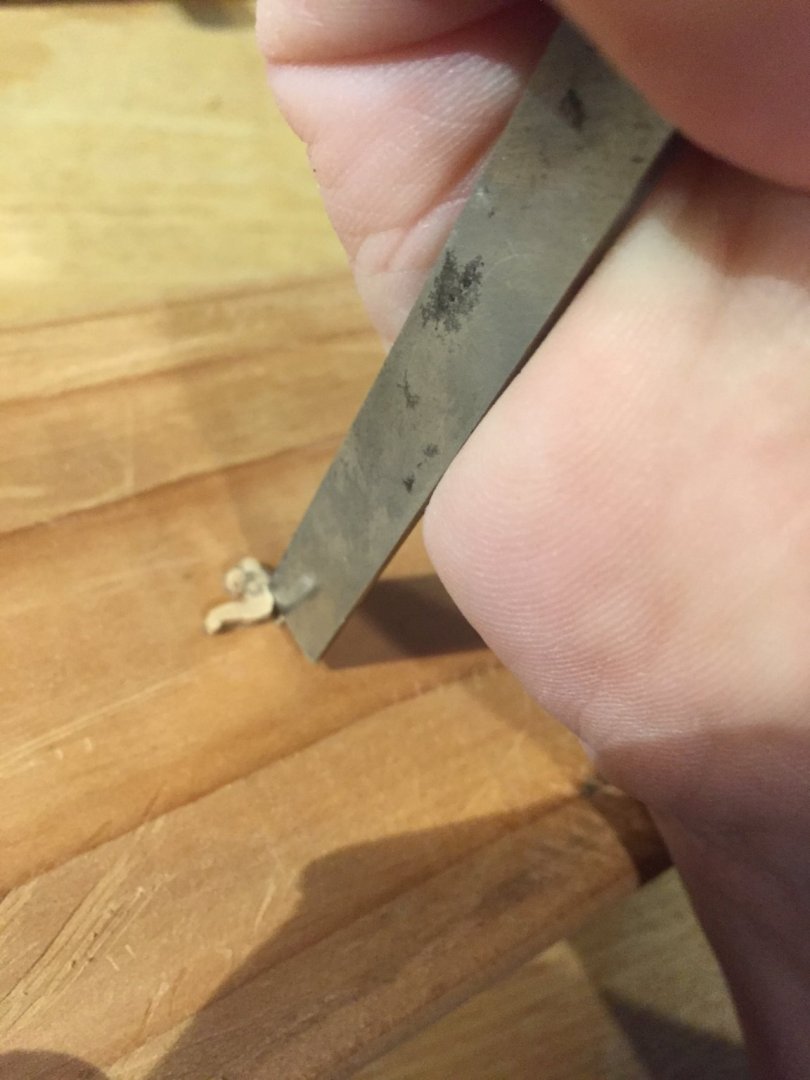
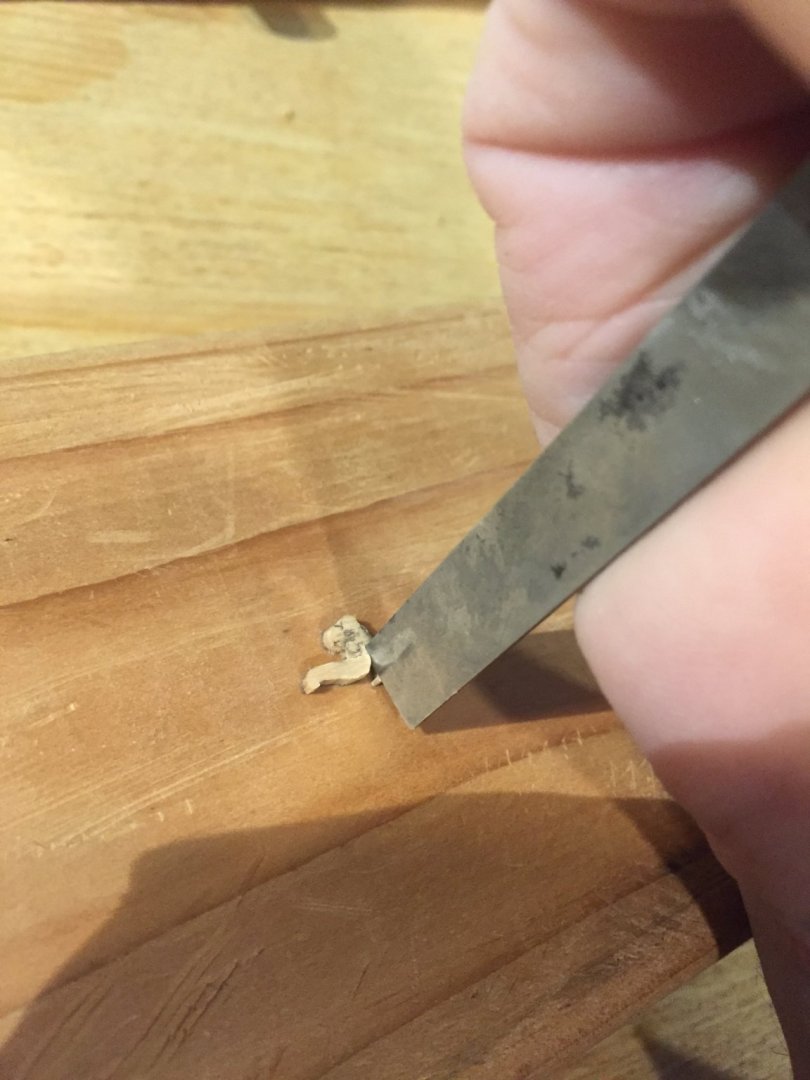
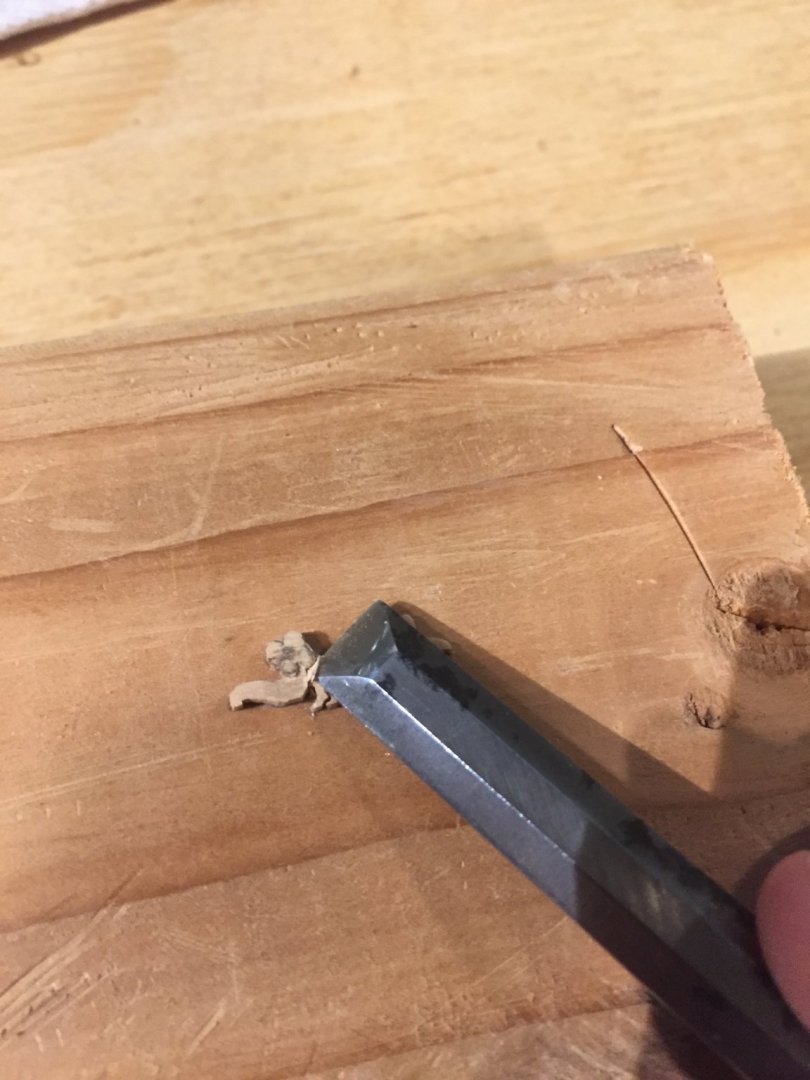
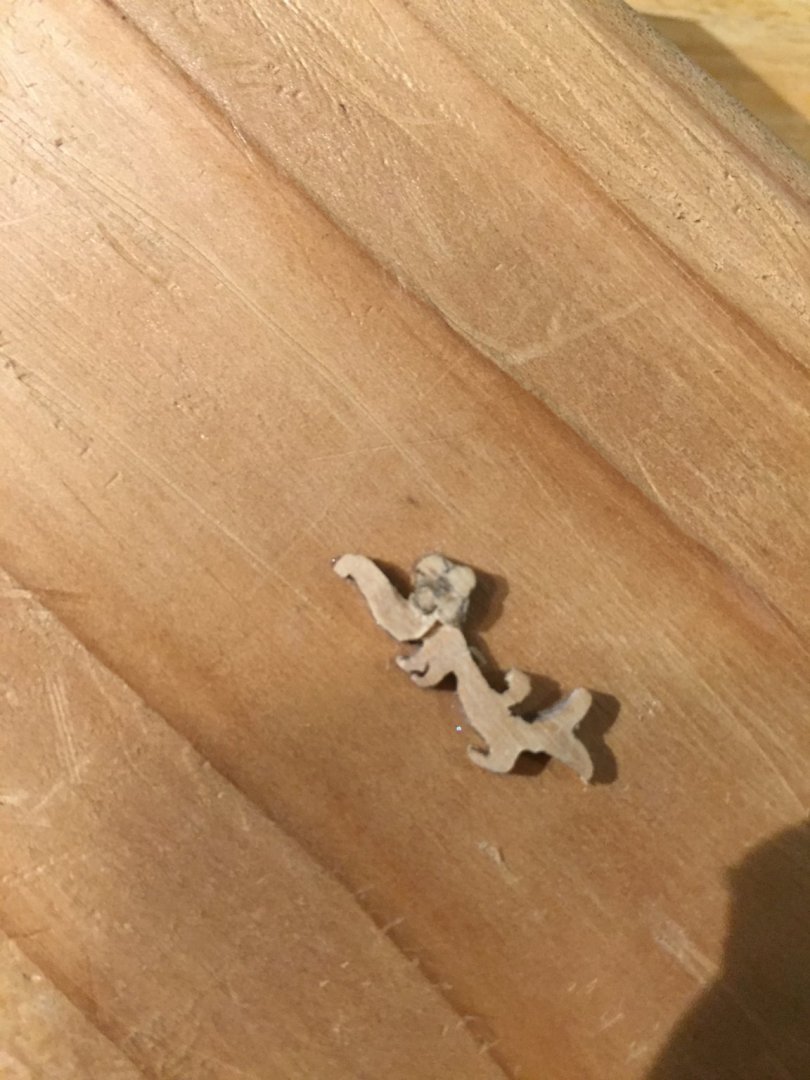
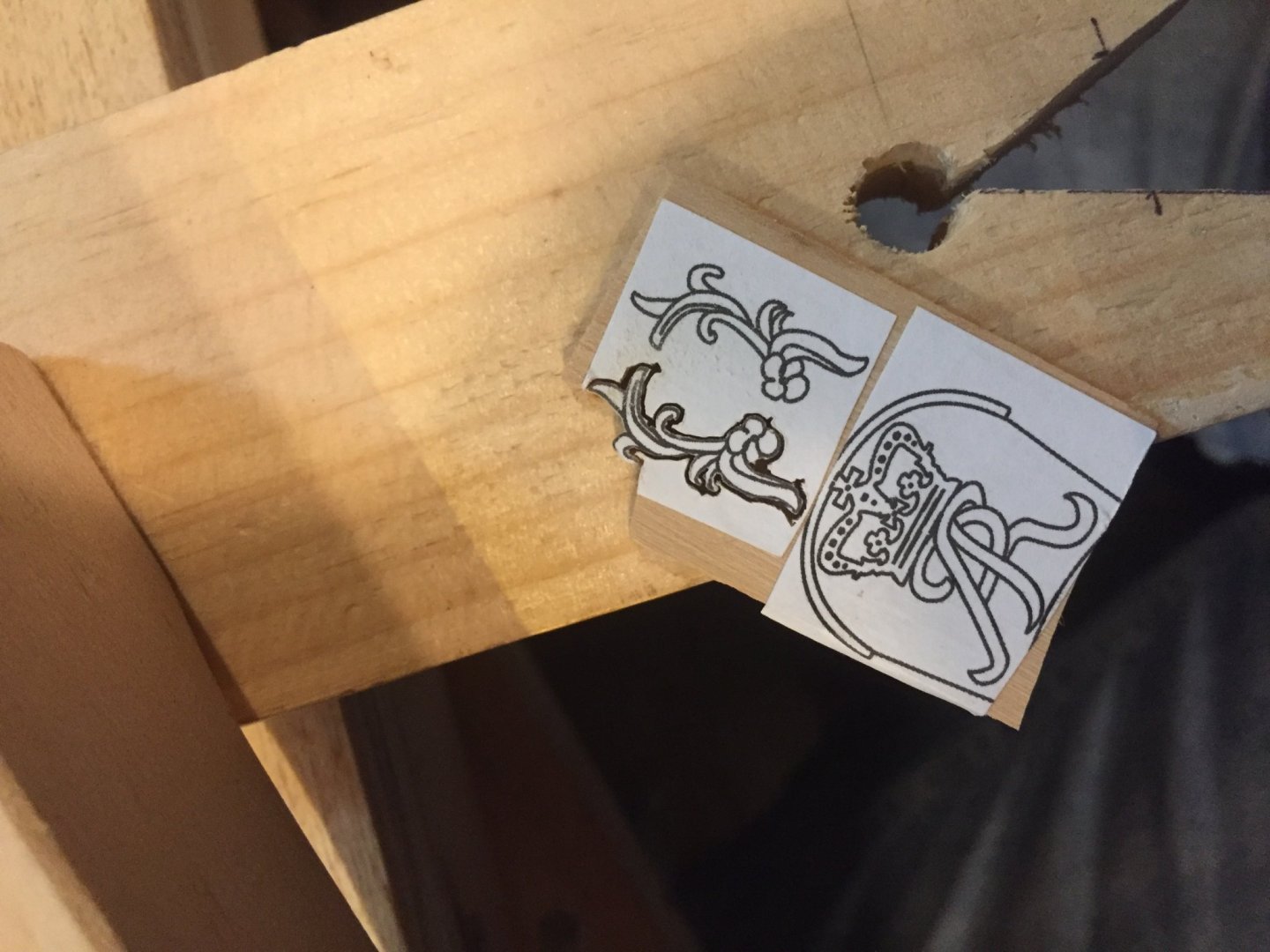
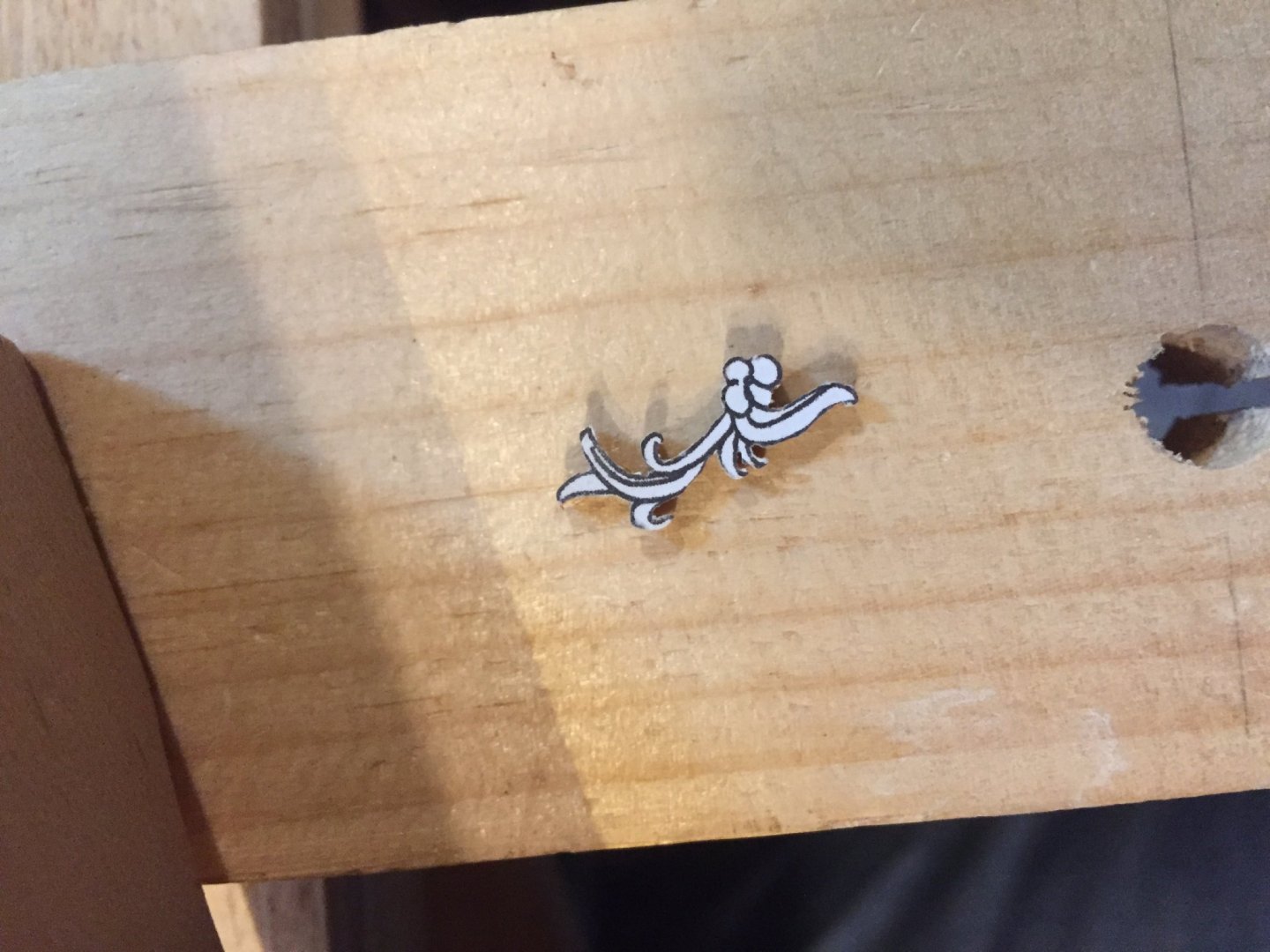
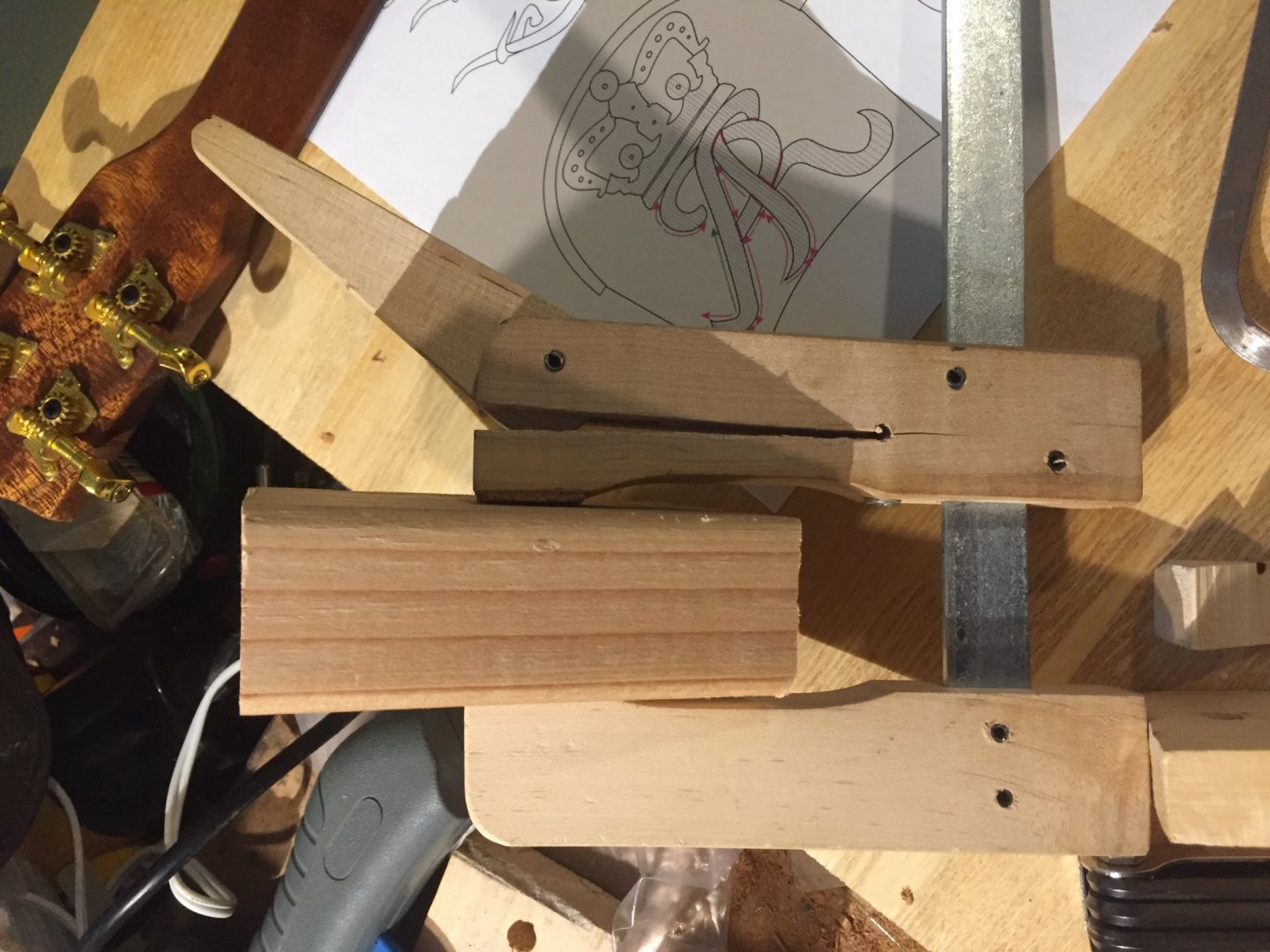
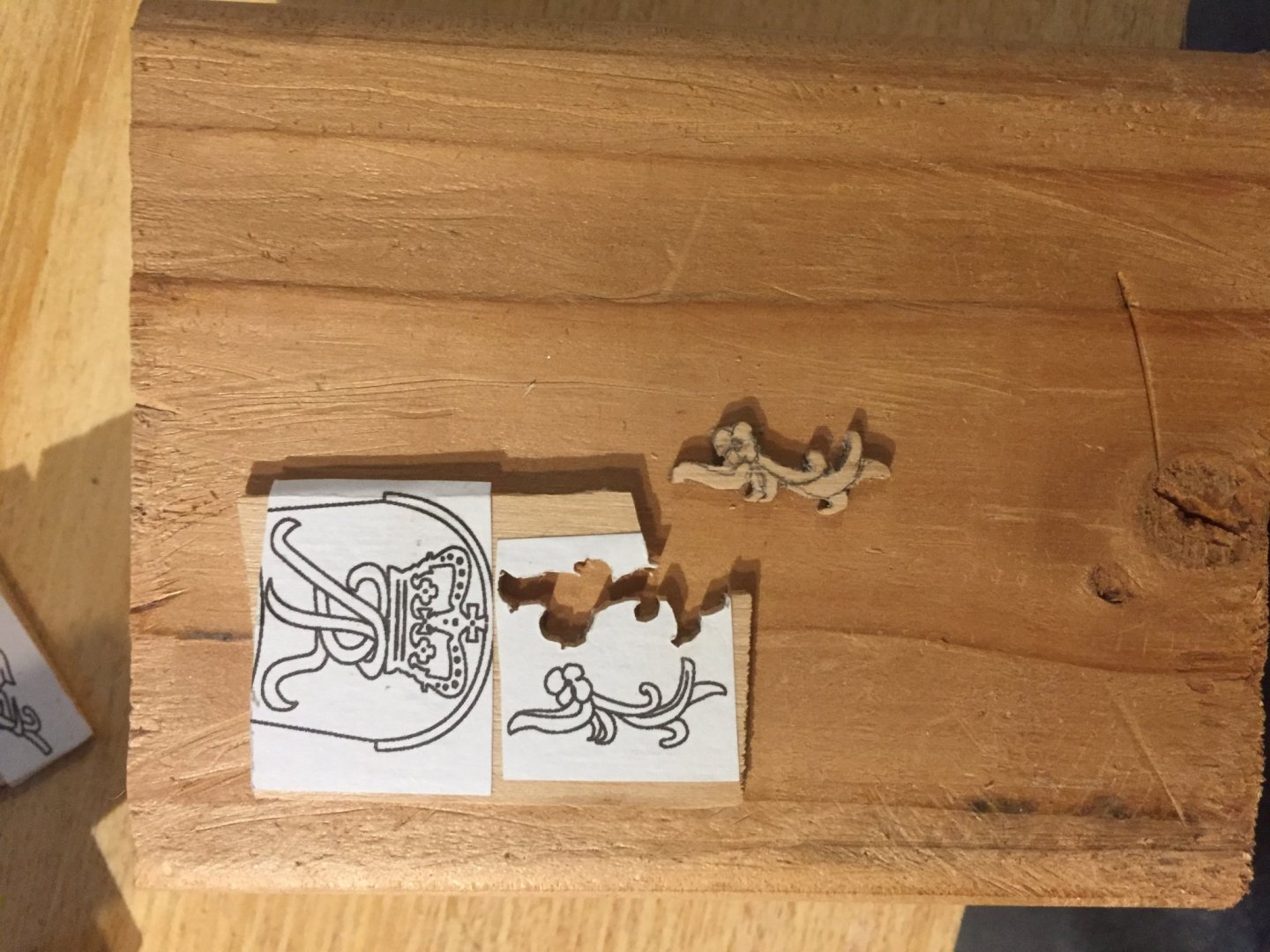
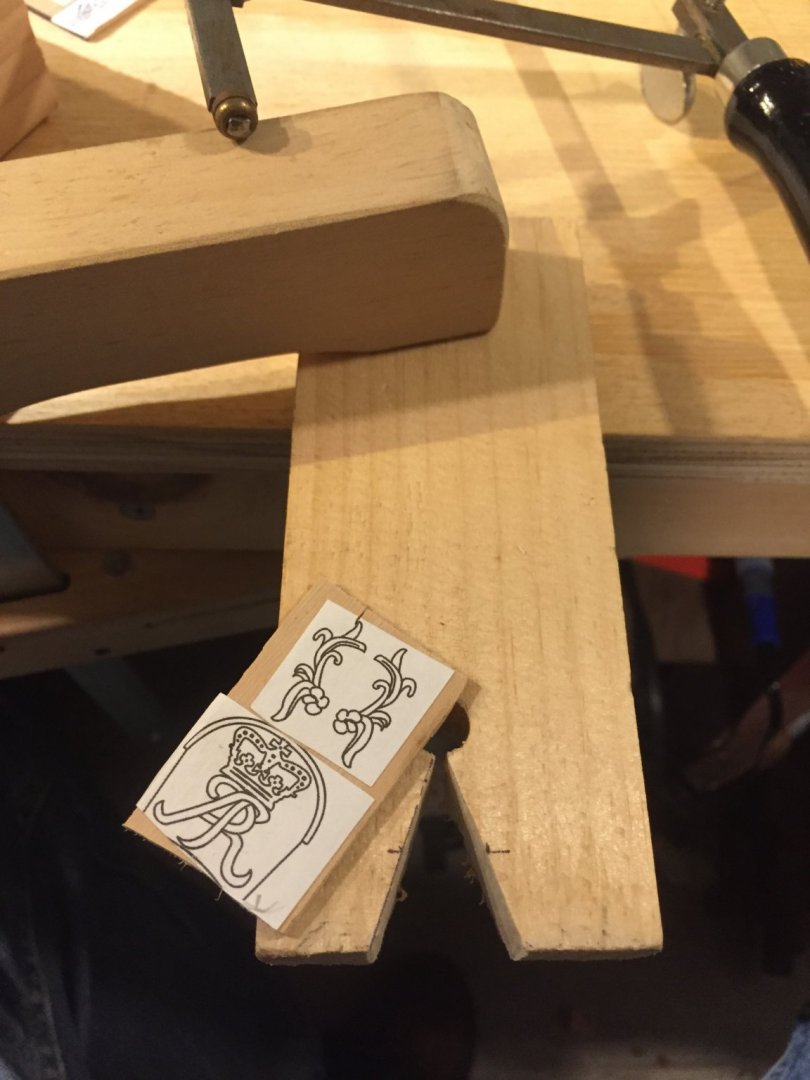
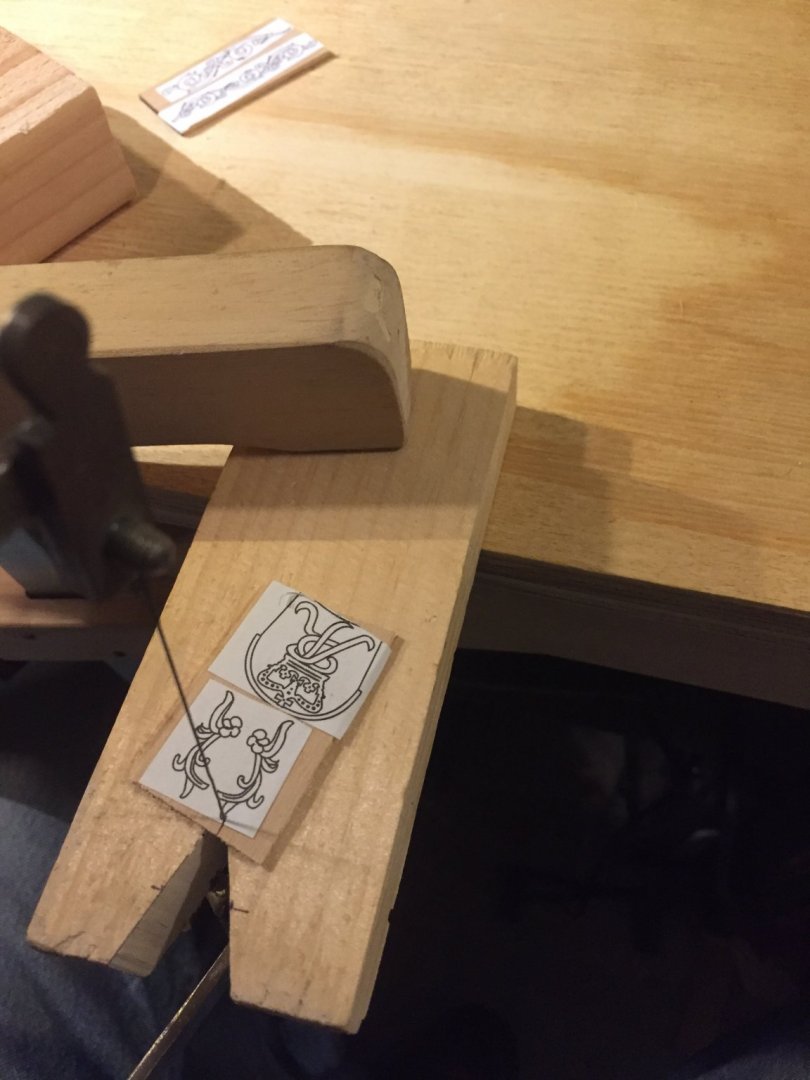
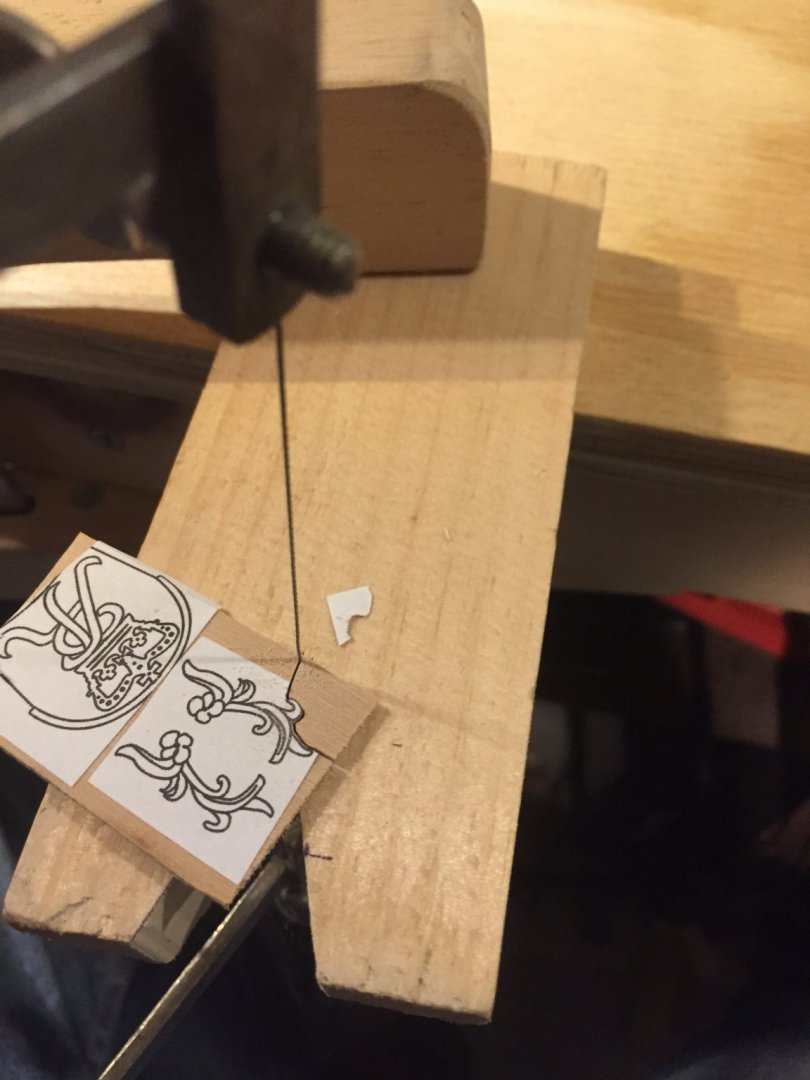
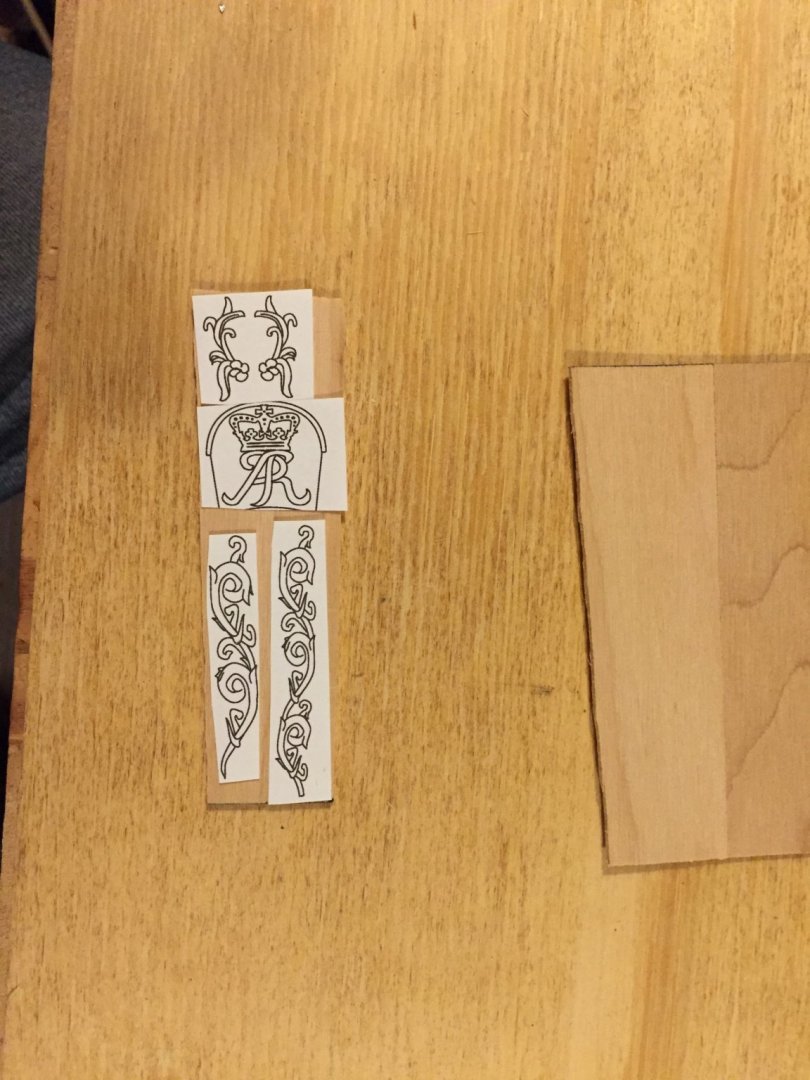
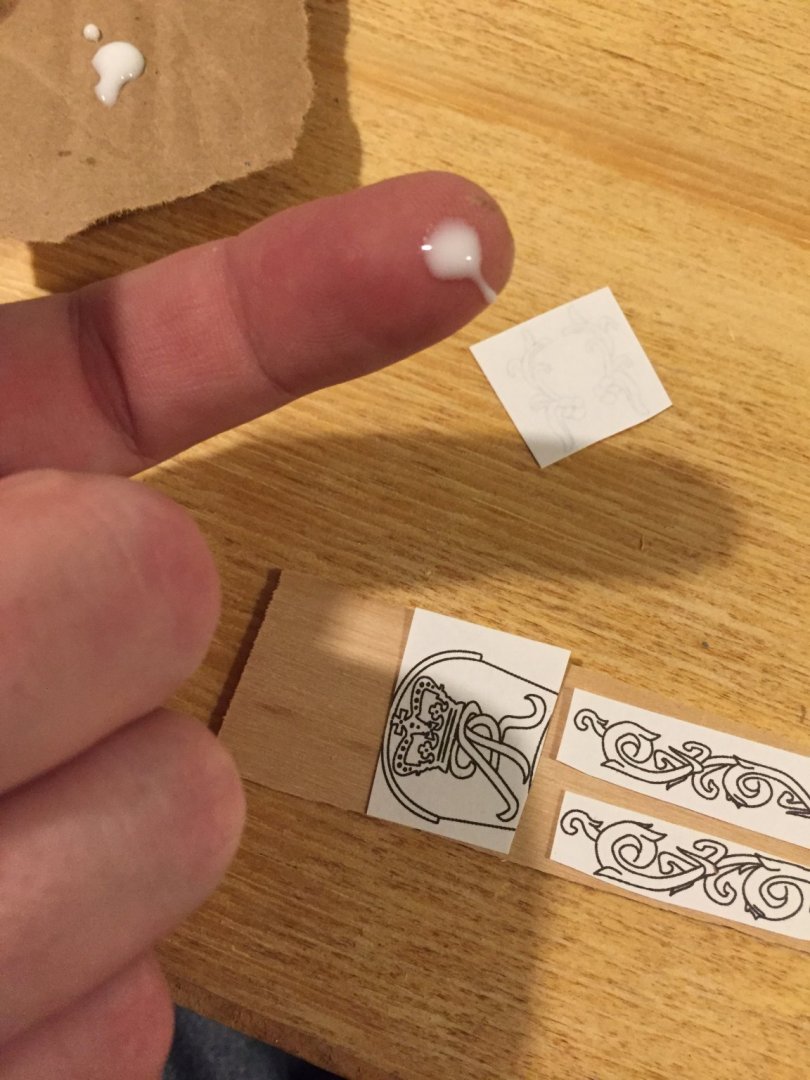
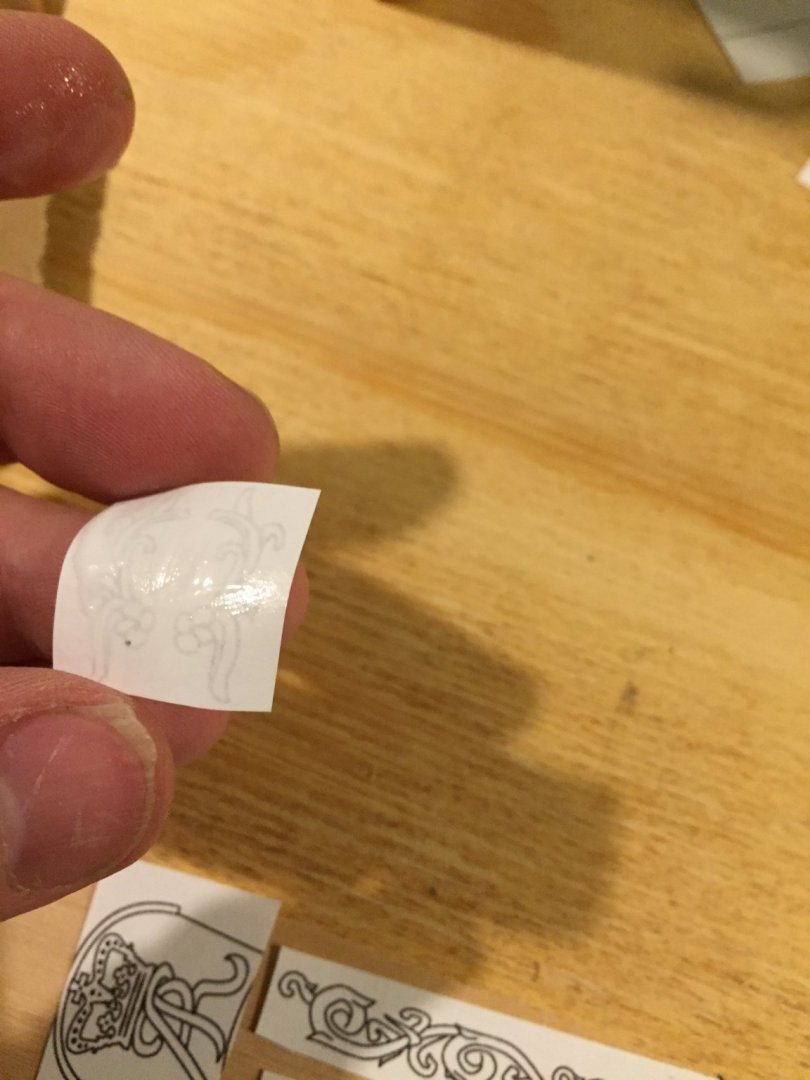
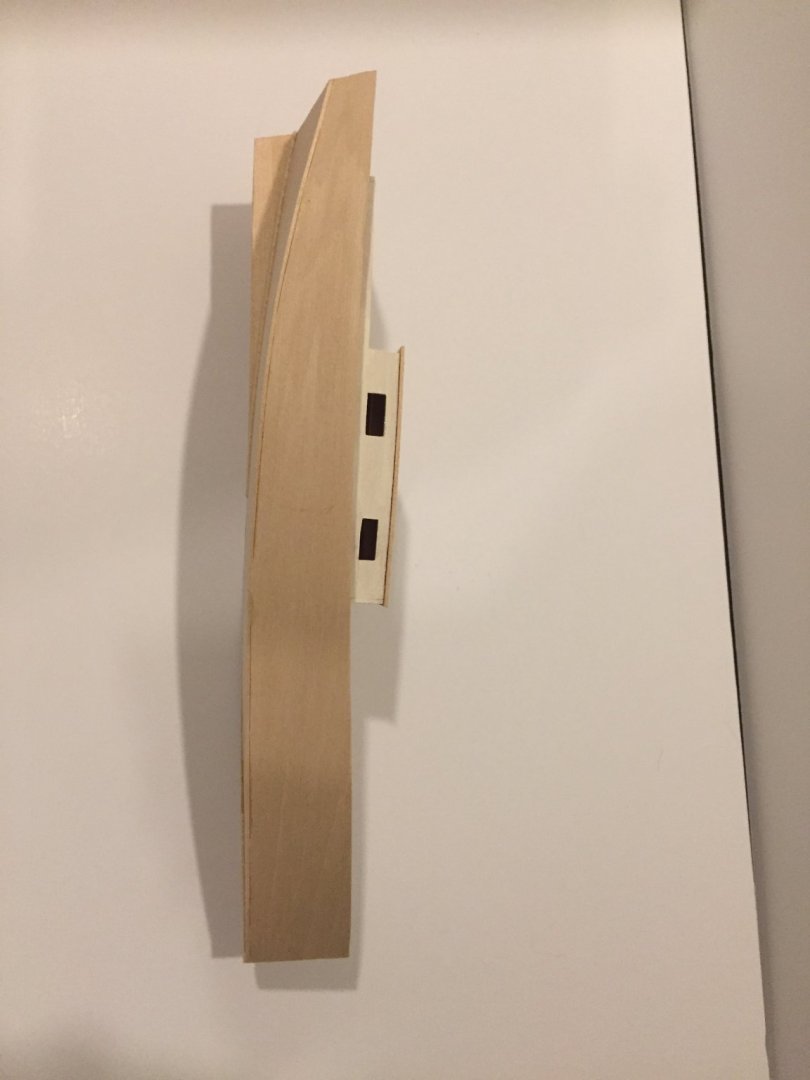
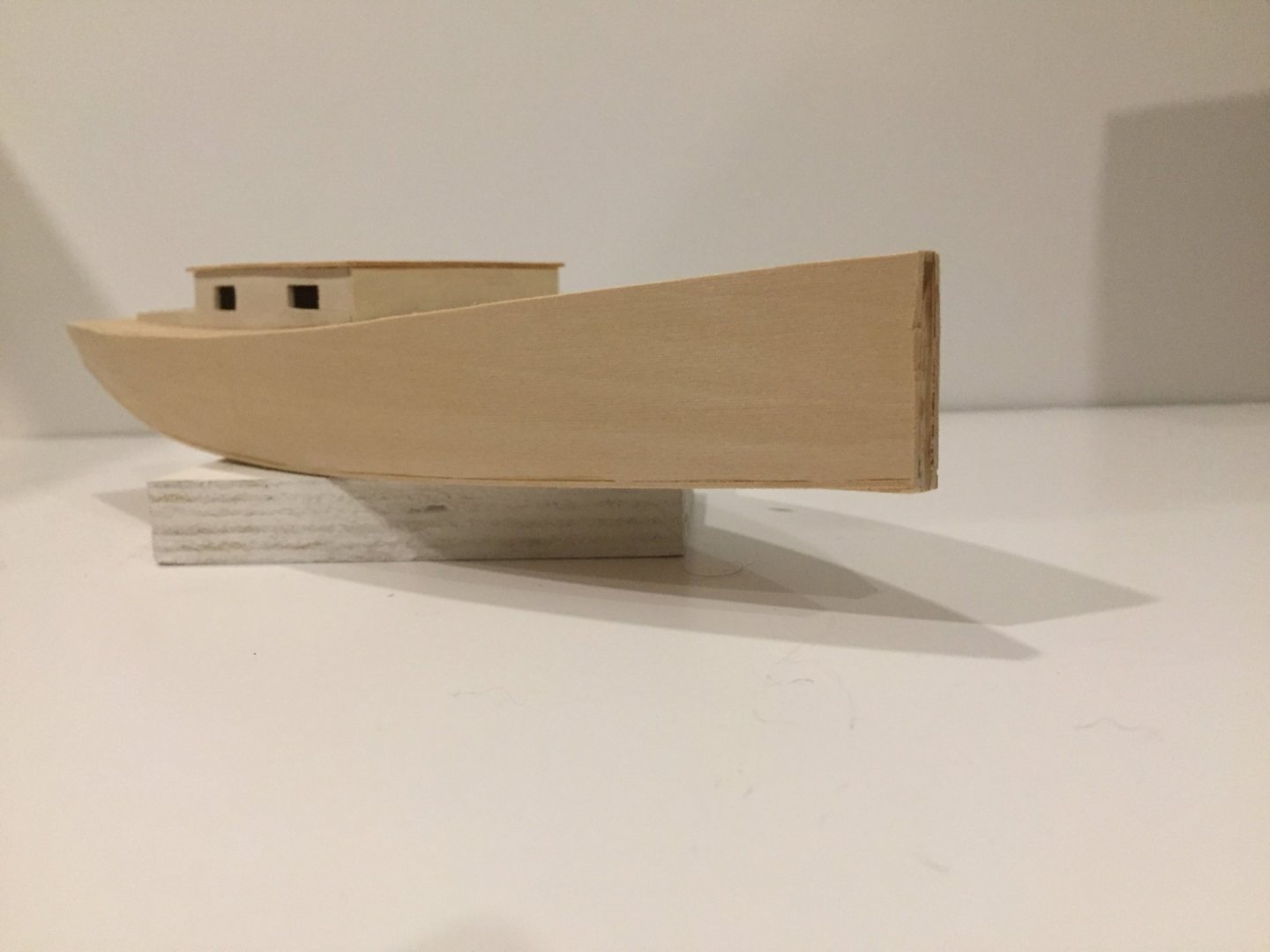
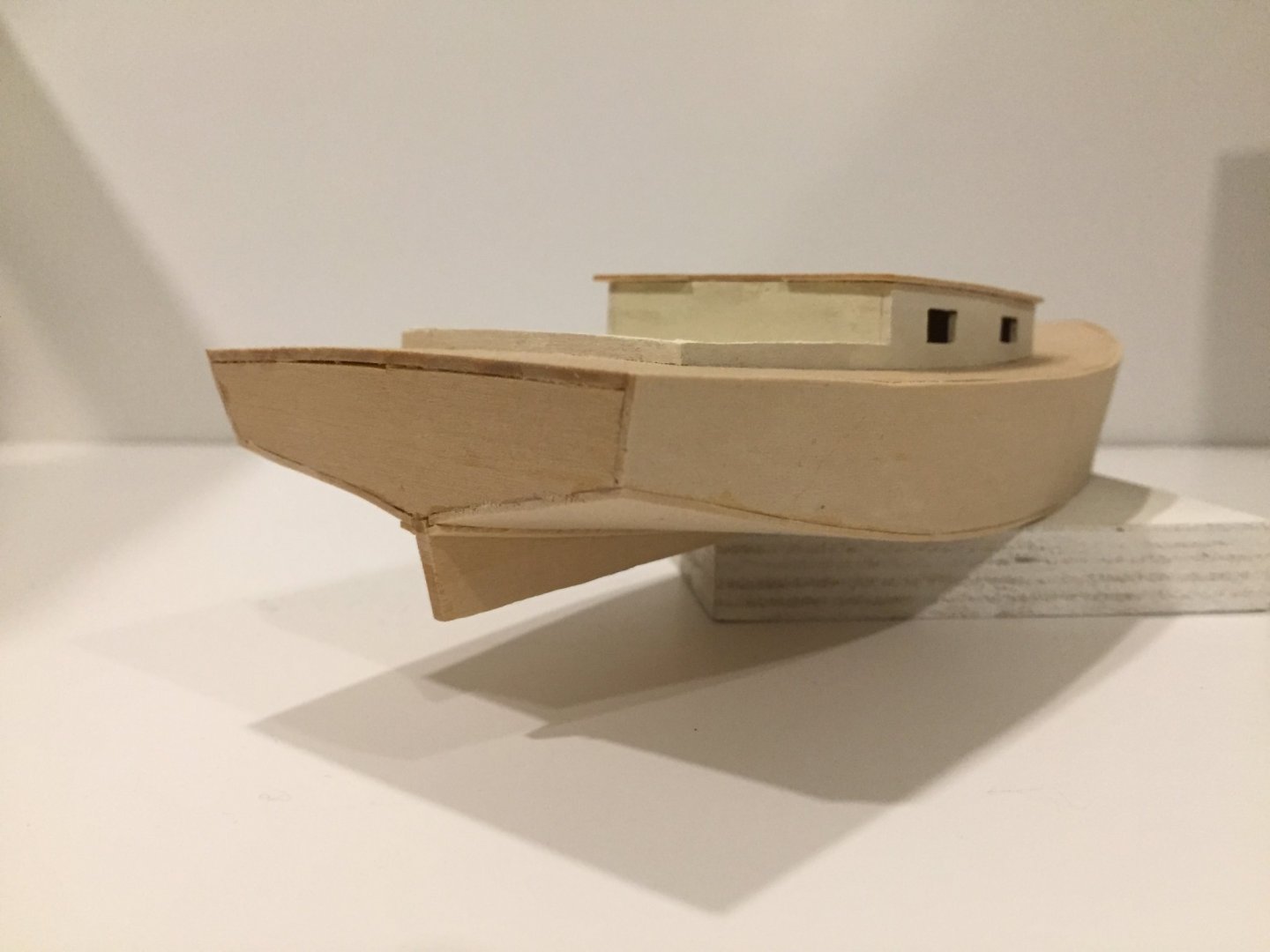
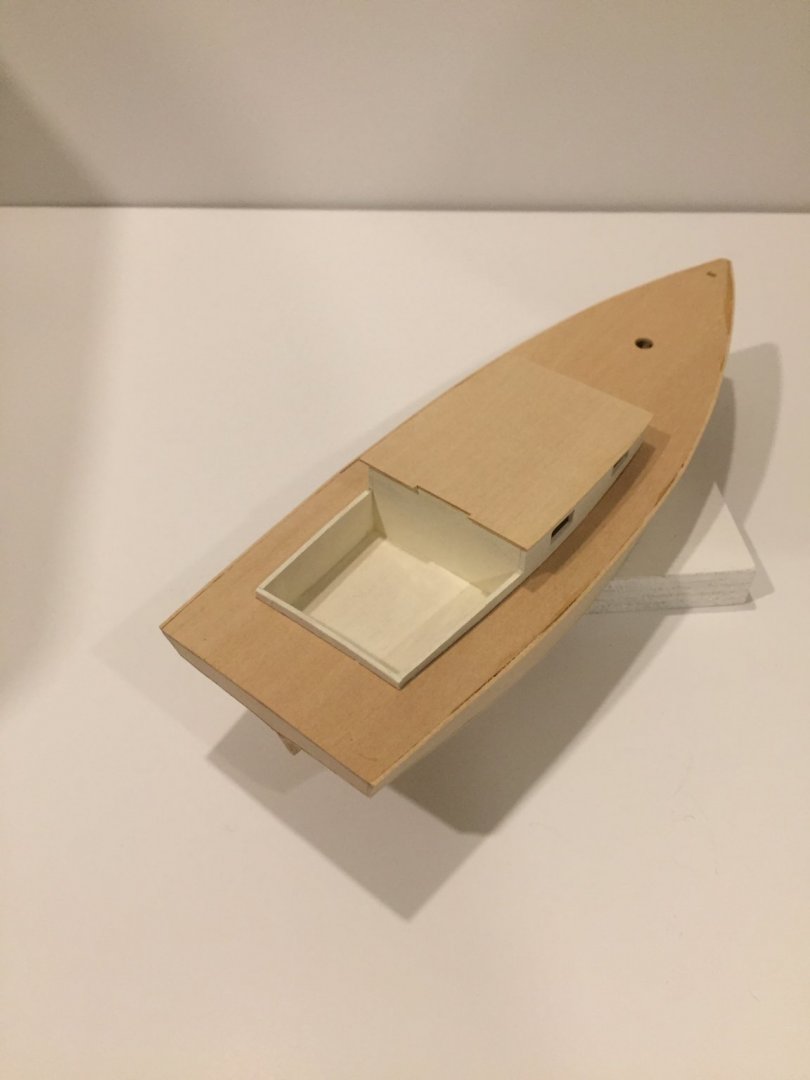
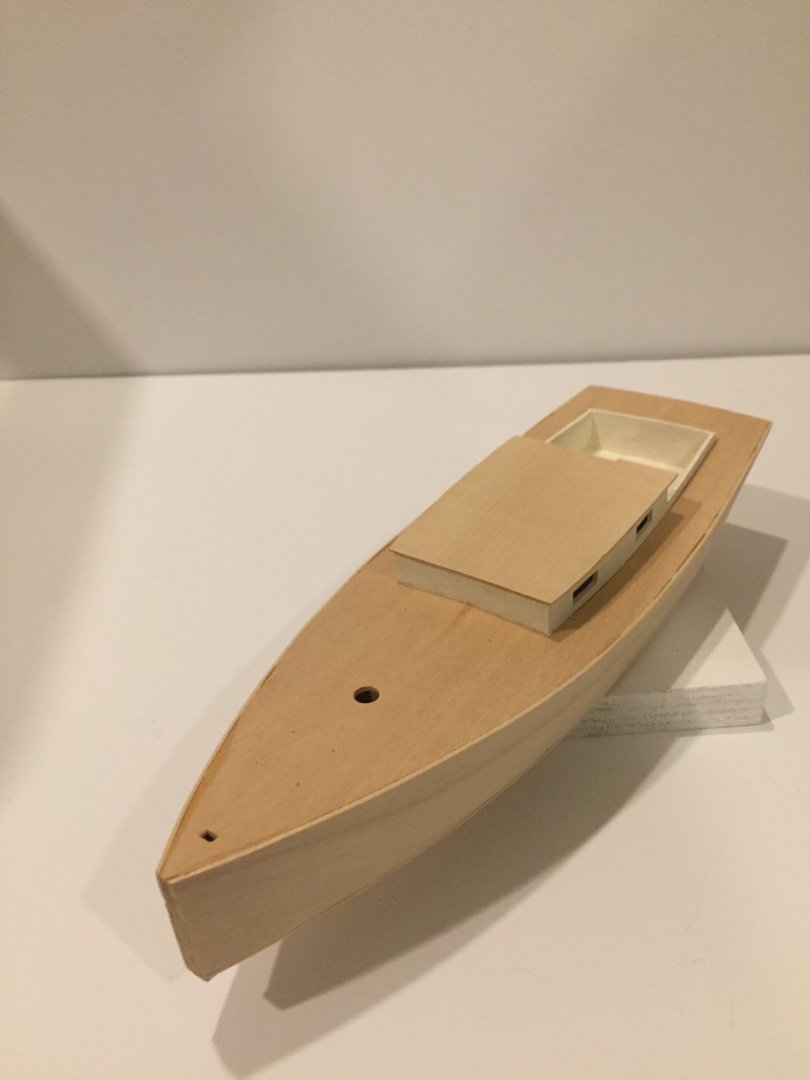
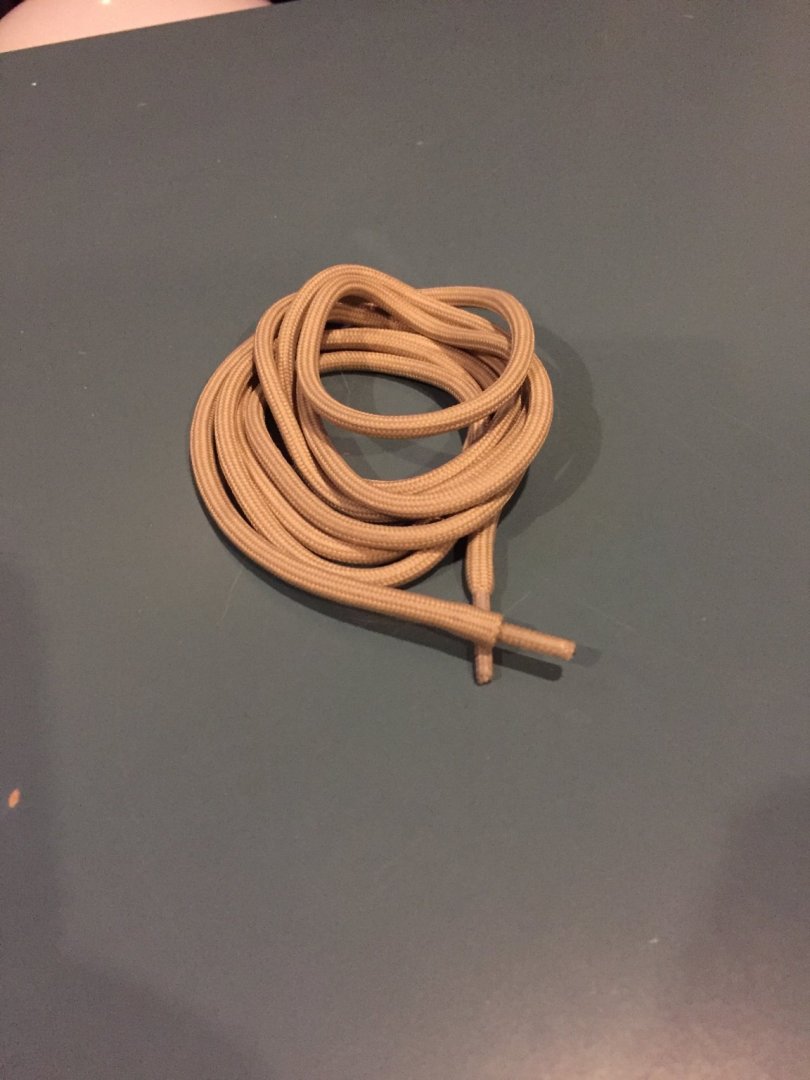
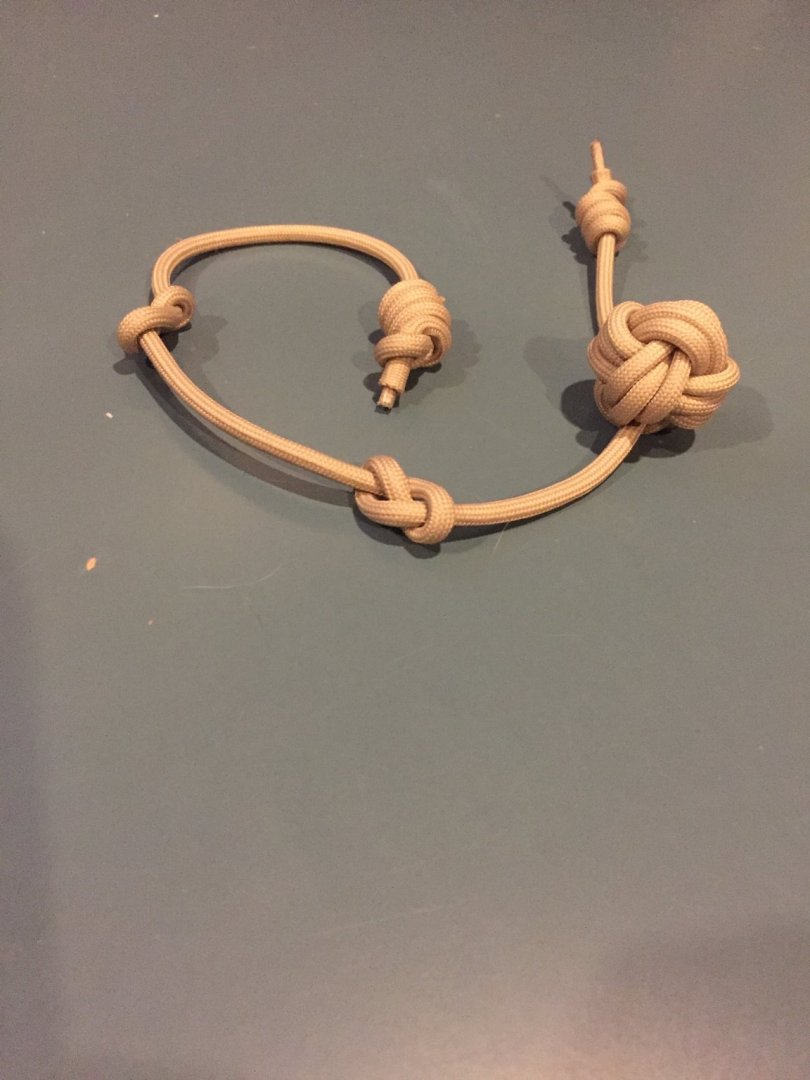
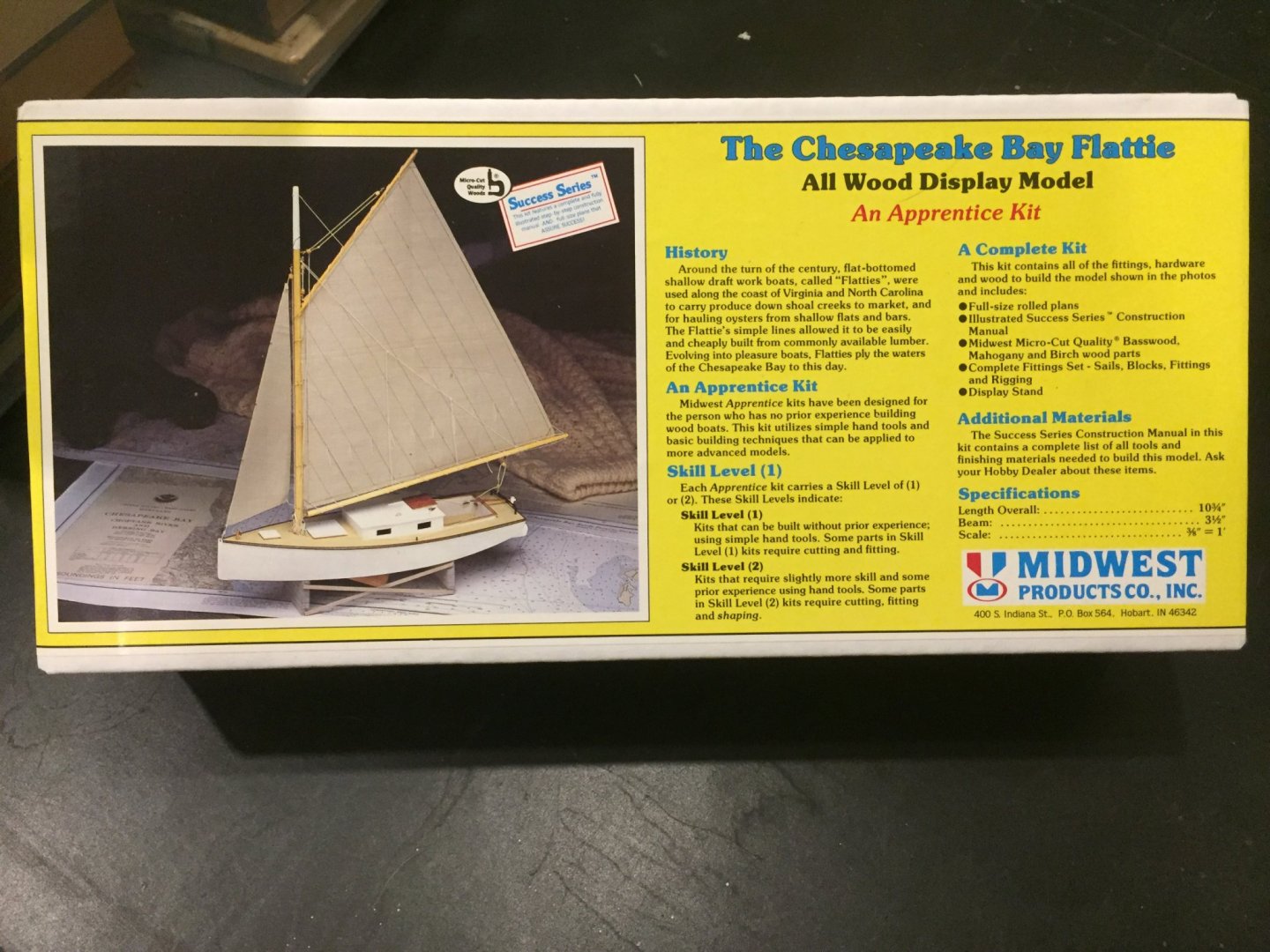
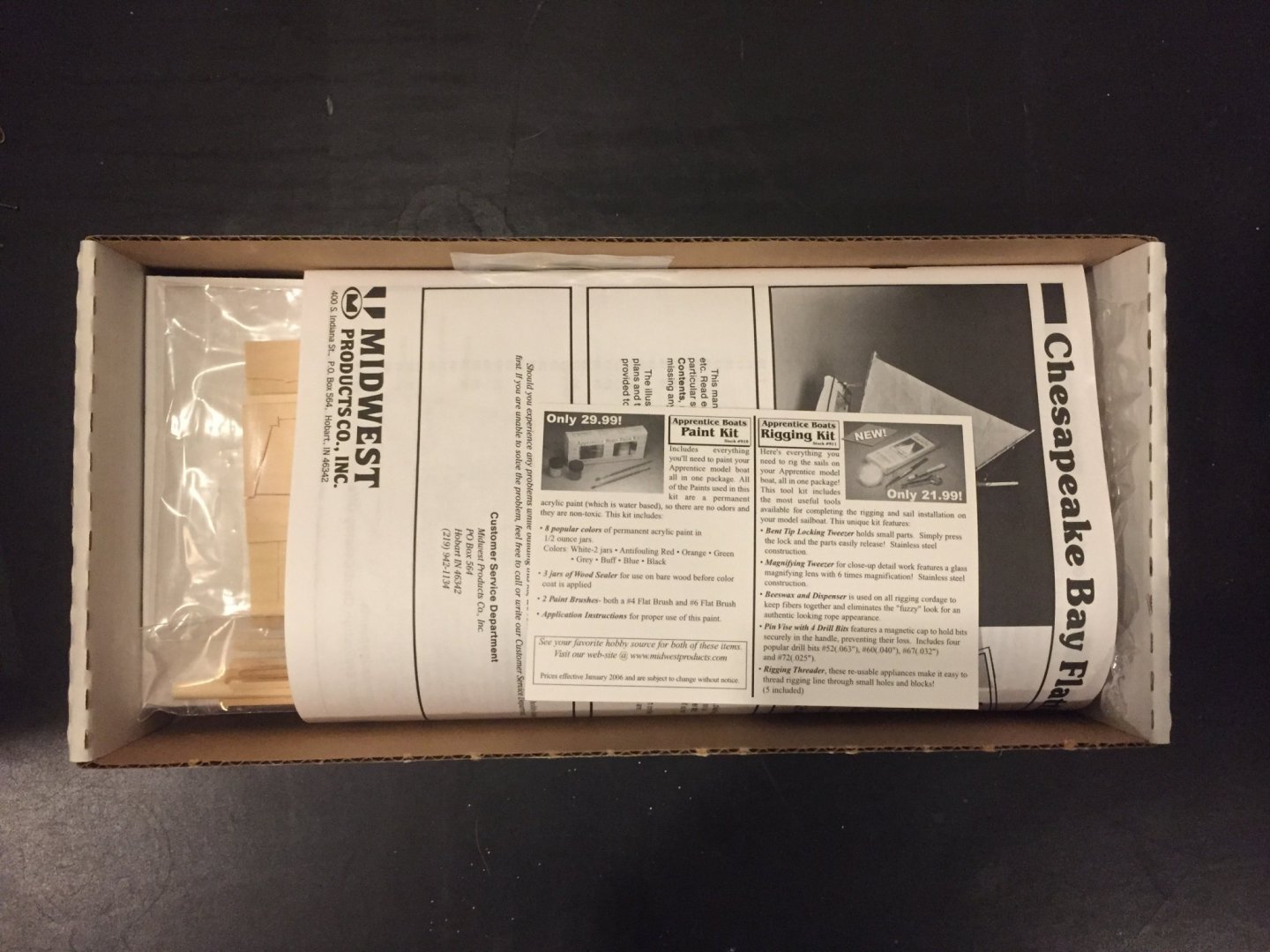
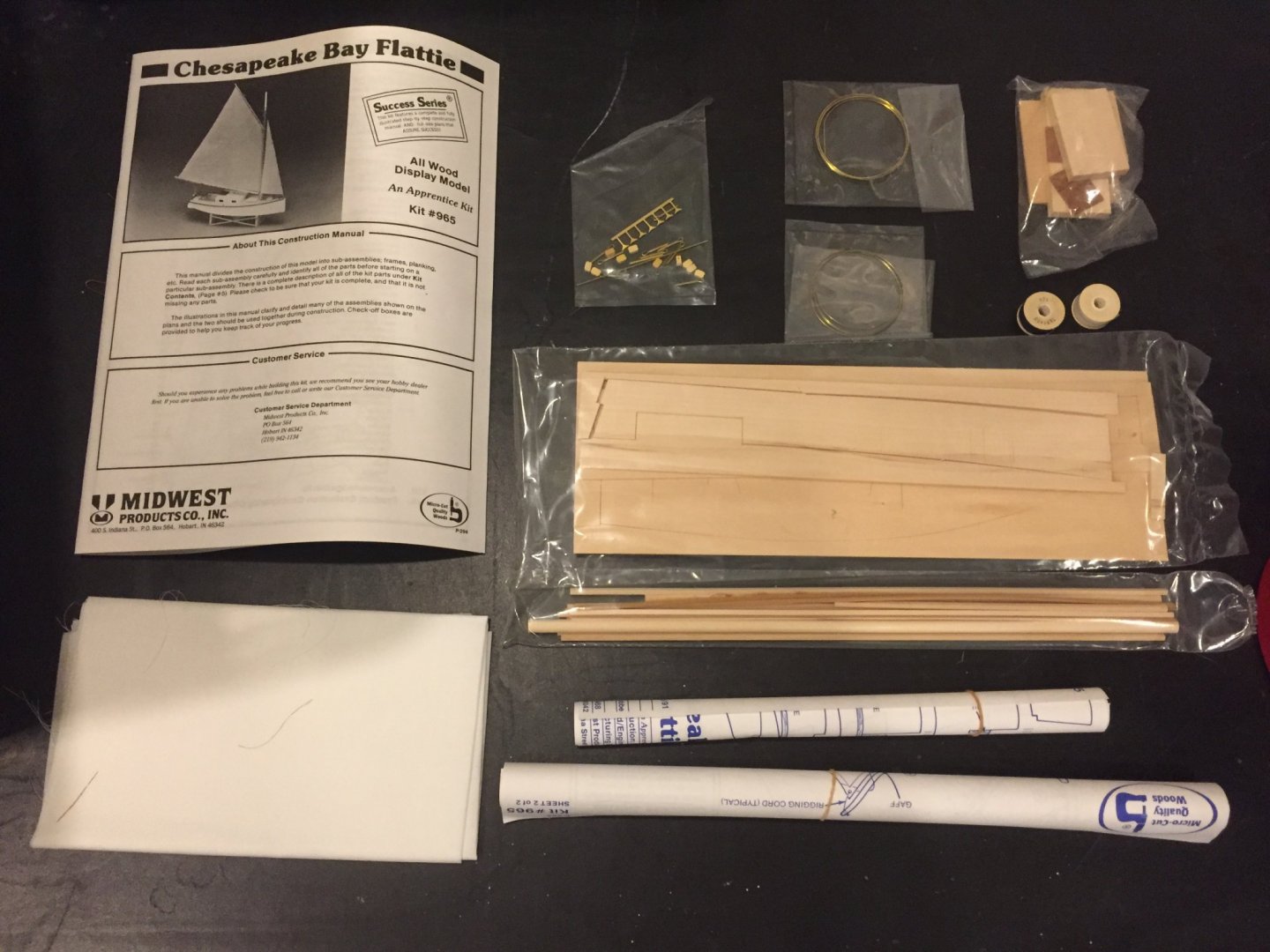
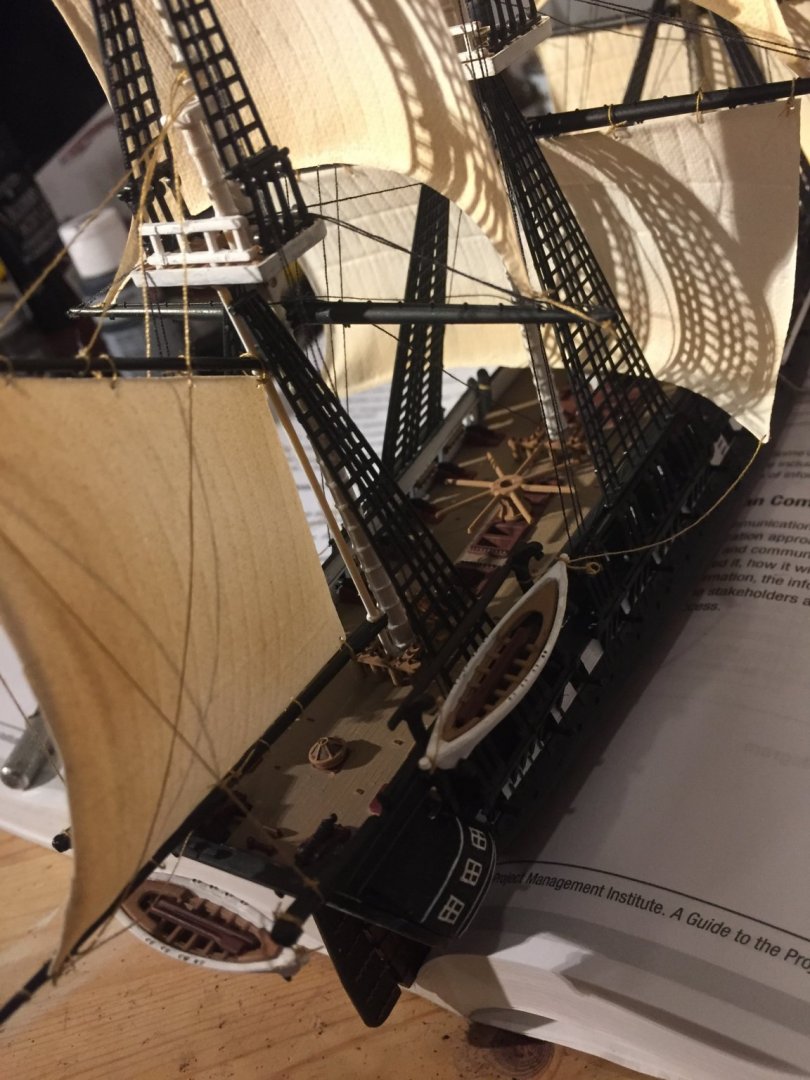
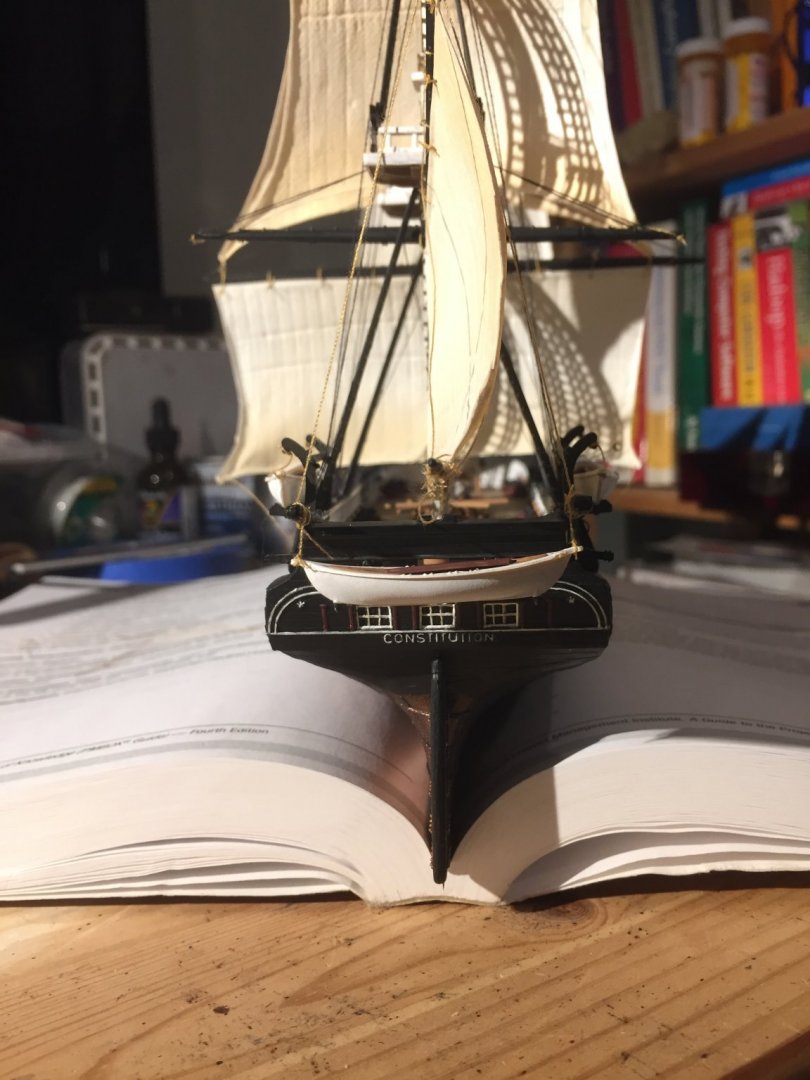
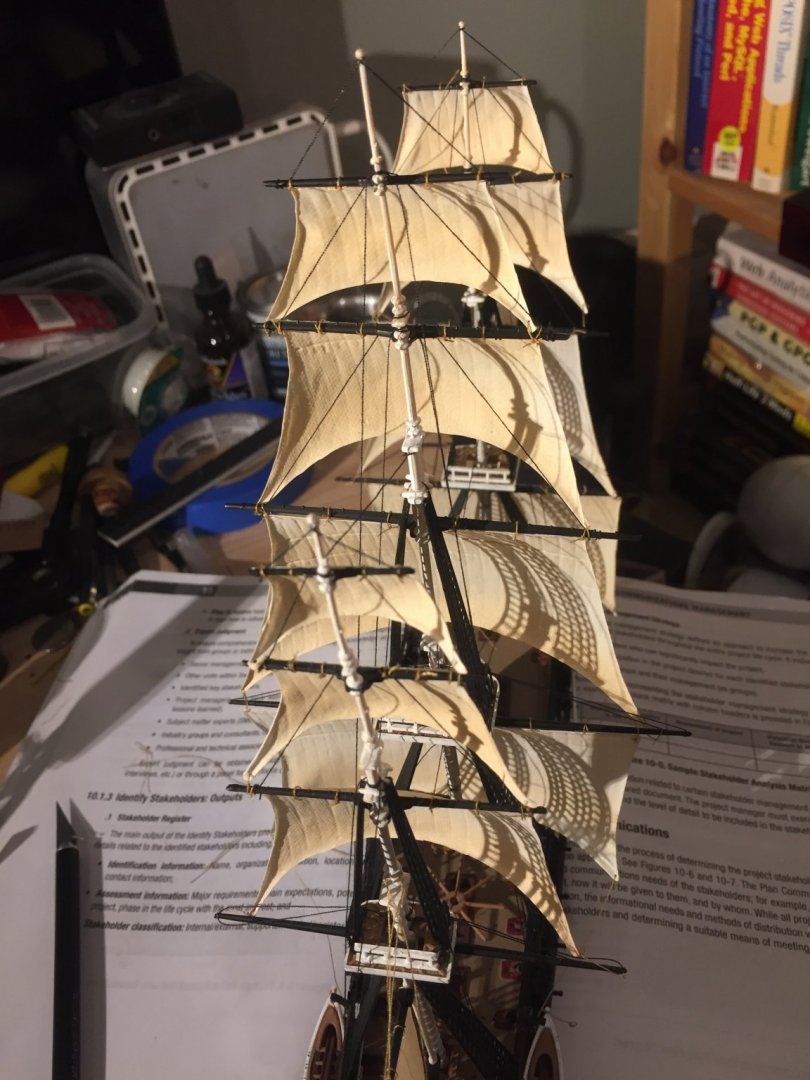
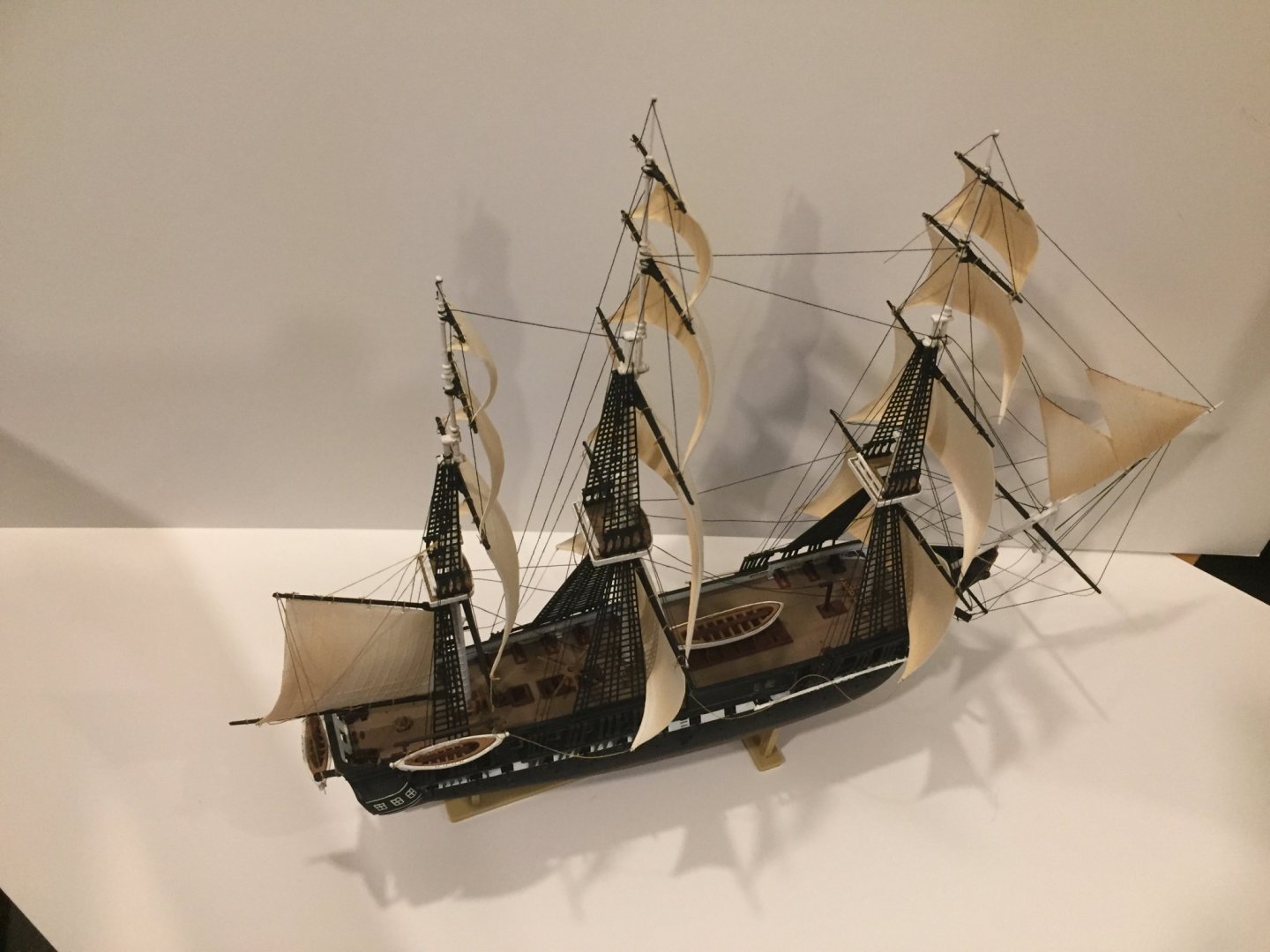
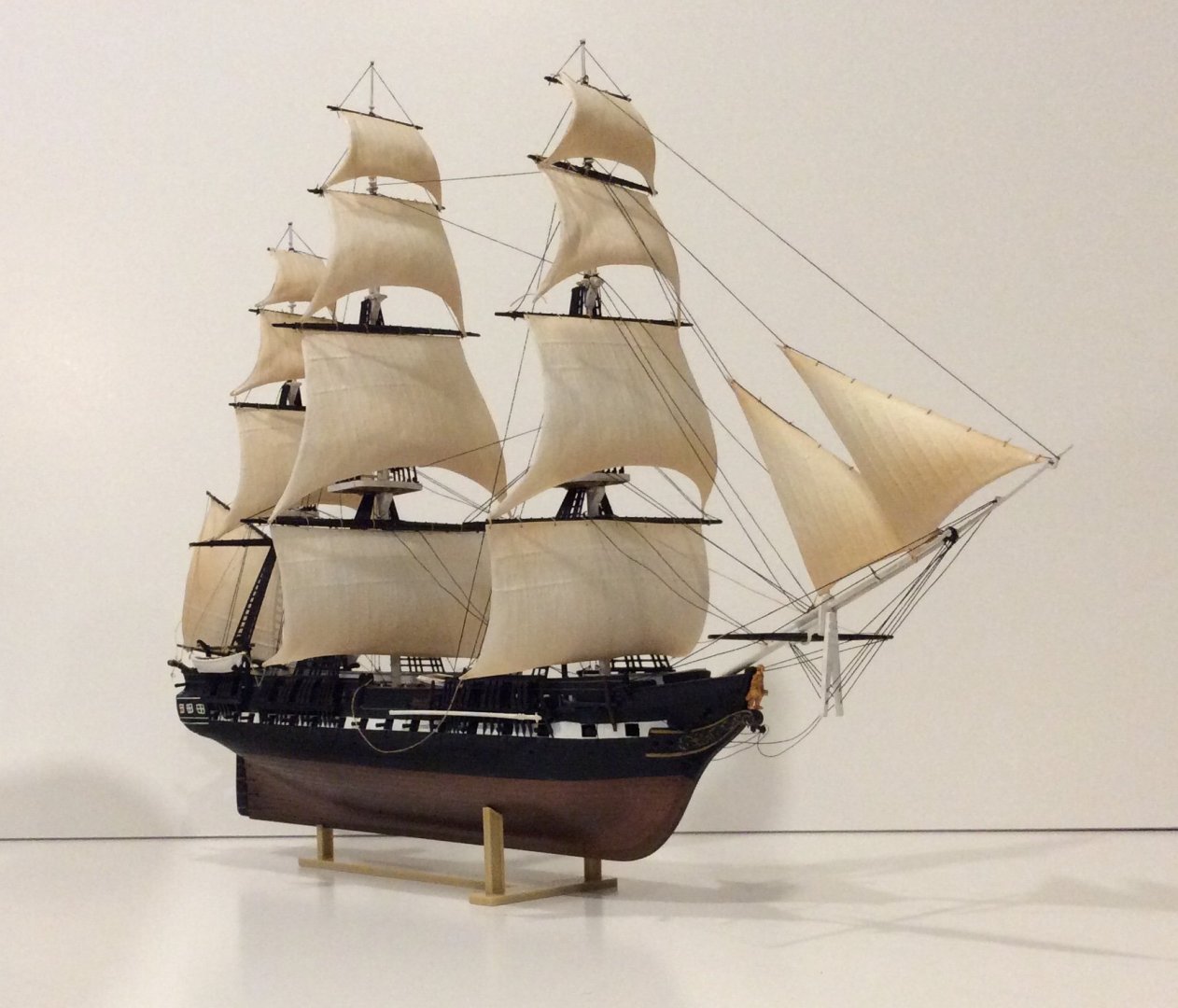
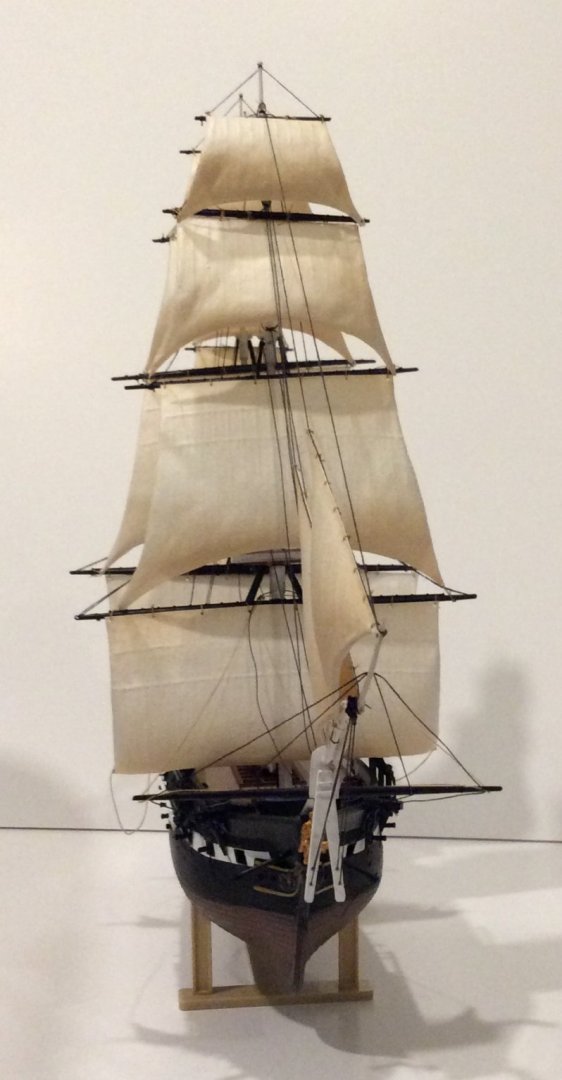

Chesapeake Bay Flattie by EricWilliamMarshall - FINISHED - Midwest Products - Scale 1:32 - SMALL
in - Kit build logs for subjects built from 1851 - 1900
Posted
Mostly clean up and shaping areas I missed first pass. I started shaping the vertical bow piece as well and will attach it shortly. I couldn't untangle the slightly off transom, but it is very slight (and will wear it as the 'newbie badge of hindsight').
I got a bit of glue on the deck also. I did some scraping but to no avail; the glue remains.
The rest are easy to deal with. I find raking (or oblique) lighting is very useful for checking for missed or flawed areas. How do folks minimize CA glue stains/leak over? As usual, I'm open to comments, suggestions, criticism and great wisdom!
Next step is prepping the mahogany hatch covers.